About

Global Team

Roberta d’Eustachio
Founder & Editor-in-Chief
Roberta d'Eustachio (Rd'E) is an entrepreneur obsessed with delivering media from the social investor/philanthropist's point of view. That desire led to founding The American Benefactor, the first consumer magazine for philanthropists, as well as Giving Magazine and each of its subsequent evolutions: from print, to digital, to mobile with Facebook Instant Articles, delivering stories of social impact - for everyone, everywhere.
Rd'E has consulted with, and/or received investment from, leading global brands, including: The Economist, the Financial Times, Euro Money/Institutional Investor, the Pitcairn Family Office, Fidelity Capital and the World Bank as well as philanthropists and social enterprises around the world.
After serving as chief-of-staff to Dame Stephanie Shirley, the British Government’s Founding Ambassador for Philanthropy, Rd'E founded the AmbassadorsForPhilanthropy.com enterprise to give social investors a voice worldwide.
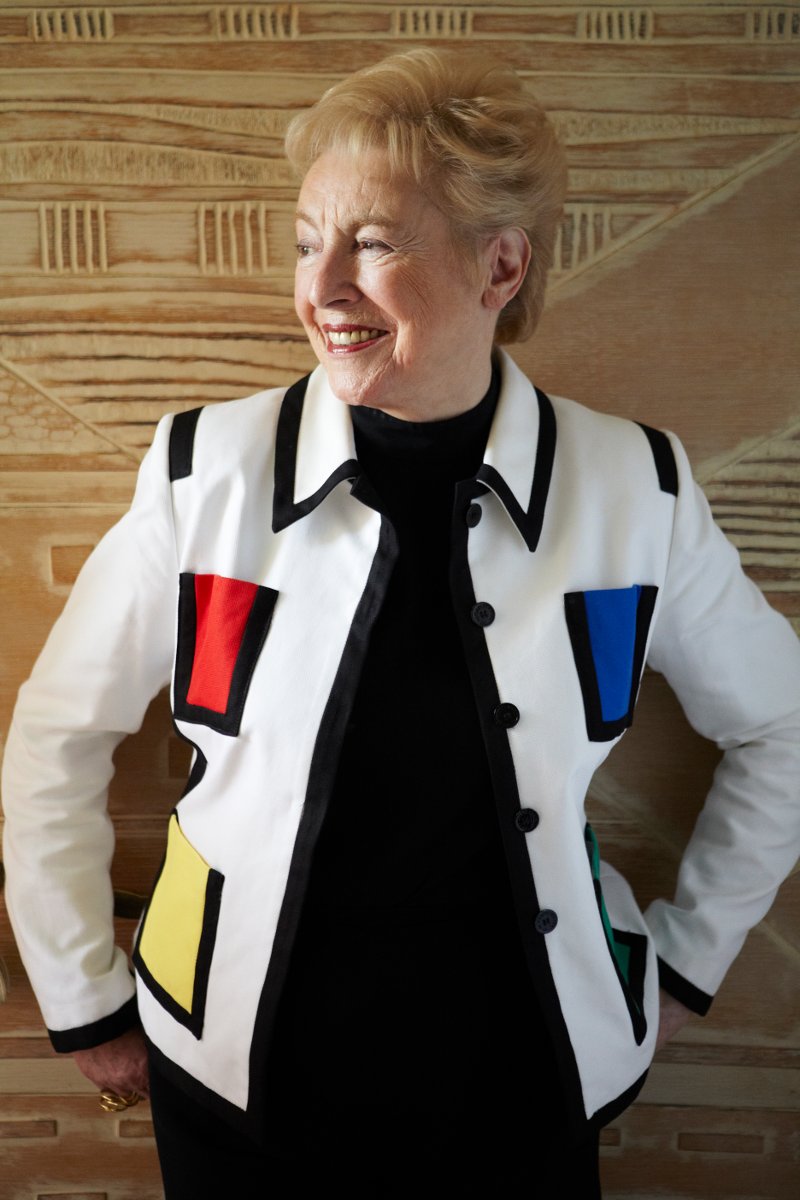
Dame Stephanie Shirley
Philanthropist & Believer-in-chief
Dame Stephanie “Steve” Shirley is a British entrepreneur turned philanthropist. She originally arrived in London as an unaccompanied Kindertransport child refugee from Austria during WWII. “Steve” was an early pioneer in technology and, after taking her company public, she has given more than $100 million to organizations that specialize in autism research and technology, including founding the Oxford Internet Institute at Oxford University. Appointed by Prime Minister Gordon Brown to the title of the British Government's Founding Ambassador for Philanthropy 2009-2010, she believes in the advancement of the philanthropist voice worldwide.
Her memoir “Let It Go” was recently published, chronicling her life so far.
"Steve" is the Believer-in-chief to Giving Magazine, providing the means to imagine and execute its potential to the fullest.

Jerry Alten
Chief Curator
Jerry Alten is a world-renowned art director of magazines, across all devices, and other marketing and advertising work, winning many prizes in the media field. Under Walter Annenberg’s ownership of TV Guide, Jerry took the circulation from 5 million up to 19 million during his tenure as art director. He continued to work with Rupert Murdoch’s organization after the buy out of TV Guide and created the first interactive website for the magazine. Jerry was also the original investor in The American Benefactor Magazine and art director, which succeeded in obtaining more than $7 million worth of investment from Fidelity Investment's venture firm.

Brian Lipscomb
Chief Technologist
Brian Lipscomb has been involved with technology for over twenty years, and founded technology services company Divergex, based in Philadelphia. Specializing in all aspects of computers, Brian brings a wealth of knowledge and expertise to Giving Magazine. His philosophy is: “Do it right, or don’t do it at all.”
Lipscomb adds: “Technology is a constantly evolving industry. People who use technology daily don’t have the time to study and learn all of the new and different terms and capabilities. I work to show people how technology can improve their efficiency, productivity and, ultimately, their lives.”

Jay Balfour
Managing Editor
Before Jay became the Managing Editor for Giving, he was a freelance writer and editor based in Philadelphia. With an academic background in Philosophy he leverages an informed perspective on everything from African music to youth movements in the West for several publications both online and in print. At Giving Magazine he shares a passion for unabated reporting and the ushering in of a new age in philanthropy.

Sandra Salmans
Executive Editor
Sandra Salmans is a New york-based writer and editor who works primarily in the nonprofit field. She began her career as a business and financial journalist at Newsweek and The New York Times, but has also covered national news, education and the arts. Prior to going freelance, she was a senior officer in communications for a leading foundation in Philadelphia.

Nicole Raeder
Digital Design Manager
Nicole delights in great design. That's why her commitment is compulsive; contagious even, to get it right. Or, change it. Or, change it again. Whatever is required to finding the way to the end point, which is sometimes the beginning. In other words, she never gives up, or stops, till the thing clicks.
She also loves cats.

Damon d'Eustachio
Co-Director, Global Membership
A foodie who navigated his way from the city of brotherly love to Charleston, S.C, Damon is devoted to serving nonprofits worldwide that believe the philanthropist voice must be heard.
Damon graduated from the College of Charleston in Art Administration and performed an internship at London’s prestigious Tate Gallery’s New York City office.

Jessica Lambrakos
Co-Director, Global Membership
Jessica is responsible for the management and development of the Global Awards for nonprofits of Giving Magazine for their nominated philanthropists and supporters.
She also serves as founder and executive director of her own nonprofit, “The Naked Truth AIDS Project”, which raises funds for AIDS prevention education programs in the USA as well as Africa.

Nick Cater
Contributing Editor
Nick Cater is a UK-based international writer and editor. A former Fleet Street journalist, he has reported from more than 40 countries so far on stories as diverse as war in Africa, environmental risks in Latin America, disasters in Europe, and the Asian sport of elephant polo.

Luke Norman
Senior Editor
Luke Norman is an experienced journalist and corporate social responsibility consultant. Having started at The Daily Telegraph, Luke has worked for a wide range of international media outlets before moving into the heady world of multi-national corporations and their sustainability commitments. Luke has transplanted himself and his family from London to Rio de Janeiro, where the views he now observes are deliriously engaging.
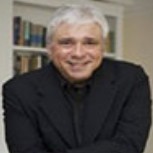
Doug White
Senior Editor
Doug White, a long-time leader in the nation's philanthropic community, is an author, professor, and an advisor to nonprofit organizations and philanthropists. He is the director of Columbia University's Master of Science in Fundraising Management program. He also teaches board governance, ethics and fundraising. His most recent book, “Abusing Donor Intent,” chronicles the historic lawsuit brought against Princeton University by the children of Charles and Marie Robertson, the couple who donated $35 million in 1961 to endow the graduate program at the Woodrow Wilson School.

Kent Allen
Journalist
Kent Allen is a longtime daily journalist and freelance writer. Over the past 20 years, while also writing about philanthropy and nonprofits, he has worked as an editor at The Washington Post, U.S. News & World Report and Congressional Quarterly. At present, Kent is a journalism and history teacher at The Field School, a middle and high school in Washington, D.C.
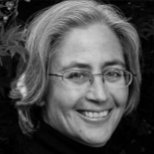
Lucy Bernholz
Journalist
Lucy Bernholz is a blogger and self-proclaimed “philanthropy wonk”. Her blog, Philanthropy 2173: The future of good, has been named a “best blog” by Fast Company and a “philanthropy game changer” by the Huffington Post.
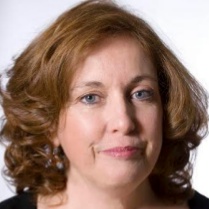
Kim Breslin
Actor
Kim Breslin is an actress, comedienne, director, producer, artist, and chef. She has been an educator in North Philadelphia for 17 Years. Mother of two incredible children, she lives with her highly supportive cat, The Amazing Sid.

Cheryl Chapman
Journalist
Cheryl Chapman actively promotes philanthropy in the UK and globally via her journalism. She was the editor of Philanthopy UK: Inspiring Giving and now heads City Philanthropy, London, as its Director.
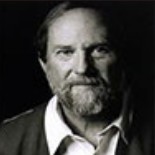
Stephen Dunn
Poet
Stephen Dunn, Distinguished Professor of Creative Writing at Richard Stockton College of New Jersey, is the author of 11 collections of poems, including “Different Hours,” which won the Pulitzer Prize for poetry in 2001.

Regan Good
Poet
Regan Good is a freelance writer and poet living in Brooklyn, New York. She has written for The Nation, The New York Observer, The New York Times Magazine and others. She is currently at work on a memoir about growing up in a family of writers.
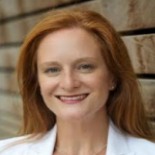
Sharilyn Hale
Journalist
Sharilyn Hale, M.A., CFRE is Founder and Principal of Watermark Philanthropic Advising where she offers strategies for meaningful giving, receiving and leading. A practitioner, author and educator, she brings a global perspective on philanthropy having served the nonprofit sector across North America, Bermuda and the Caribbean, Africa and Asia. She holds a graduate degree in Philanthropy & Development and is past Chair of CFRE International, the global certification for professional fundraisers setting standards for ethical and accountable practices.
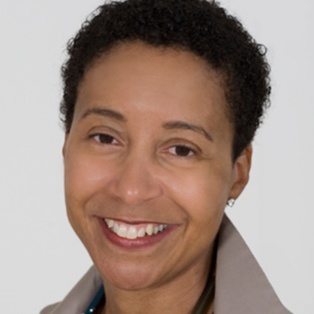
Crystal Hayling
Journalist
Believer in a better world. Uppity advocate for social change. Former philanthrapoid. Crystal lives in Singapore where she helps donors develop strategy for effective grantmaking. She serves on numerous boards, and is a speaker and writer on civil society. Twitter: chayling

Holly Howe
Journalist
Holly Howe is a strategic communications consultant with a particular focus on the arts. She works as a freelance journalist, writing for various publications including FAD, RWD, House (published by the Soho House group) and the Irish Examiner. She also runs the Culture Vultures, a networking group for people in media and the arts. She can be found tweeting at @ hollytorious and in her occasional spare moments, she posts on her blog www.postcardsfromholly.blogspot.com
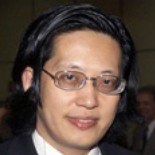
Wangsheng Li
Journalist
Wangsheng Li is president of ZeShan Foundation (Hong Kong) and a Senior Fellow of the Synergos Institute (New York City).
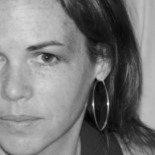
Lisa Macdonald
Journalist
Lisa MacDonald is a freelance writer and editor based in Toronto. A passion for philanthropy drives her involvement in initiatives that bring information and innovative ideas to Canada’s nonprofit sector leaders. Tweet her at @lisalmacdonald.
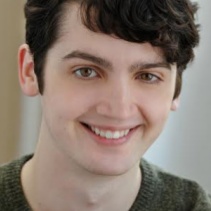
Andrew MacLarty
Actor
Andrew MacLarty is a New York based actor who has appeared on Boardwalk Empire and White Collar. Non-profit work includes narration for Partnership for a Drug-Free America, performances at the United Nations for Hurricane Katrina relief benefit shows, and Barefoot Theater Company’s ROCKAWAY benefit for Hurricane Sandy victims.

Bruce Makous
Journalist
Bruce Makous, ChFC, CAP, CFRE, has been a professional fundraiser for over twenty-seven years, with leadership positions in major educational, healthcare, and arts organizations. In 2009, he was named by the Nonprofit Times one of the “Most Influential and Effective” fundraisers in the US.
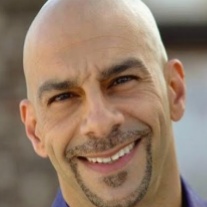
Peter D. Michael
Actor
For over 20 years, Peter D. Michael has been an established actor, voiceover talent and stand-up comedian. He is also an Emmy award winner.
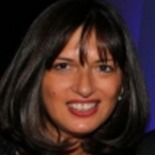
Suzanne Reisman
Journalist
Suzanne is a U.S. international private client lawyer based in London. Suzanne assists philanthropists, their foundations, and international charities with cross-border philanthropy.
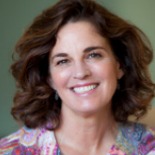
Julie Shafer
Journalist
Founder of Julie Shafer Development + Philanthropy, a national philanthropy consulting firm. Ms. Shafer offers a multifaceted skill set honed throughout 20 years as a philanthropy executive bringing a translational approach that bridges the gaps between philanthropists and non-profits.

Jade Shames
Playwright
Jade Shames is an award-winning writer living in Brooklyn, NY. His work can be found in The Best American Poetry blog, The LA Weekly, HOW art and literary journal, and more. He was awarded a creative writing scholarship to attend The New School where he received his MFA.

Amy Singer
Journalist
Amy Singer teaches Ottoman and Turkish history, as well as courses on Islamic philanthropy and the history of charity in the Department of Middle Eastern and African History at Tel Aviv University. Her recent publications include the book "Charity in Islamic Societies", and in 2008 she was awarded the Sakıp Sabancı International Research Award.

Sharit Tarabay
Artist
Sharit Tarabay painted the portrait of Gerry Lenfest. He is a painter and illustrator living in Montreal. He has his works published in magazines and books around the world.

James V. Toscano
Journalist
Jim Toscano is a principal in the consulting firm, Toscano Advisors, LLC, and an adjunct professor at the School of Business, Hamline University. Recently retired as president of the Minneapolis Heart Institute Foundation, the cardiovascular research and education center of Abbott Northwestern Hospital in Minneapolis, he is a past chair of the Minnesota Charities Review Council and board member of Minnesota Council of Nonprofits.
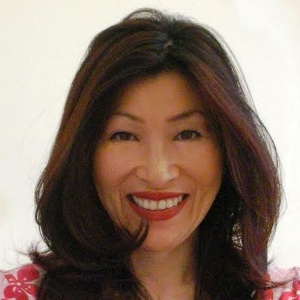
Susan Yu
Journalist
Susan Yu is a journalist from the San Francisco Bay Area. She is an award-winning news reporter who was formerly based in Hong Kong for 14 years covering stories in Asia for international news media organisations. She is currently based in the United Kingdom where she freelances as a writer, editor and documentary film producer.
The Apple Founder's Philanthropic Legacy
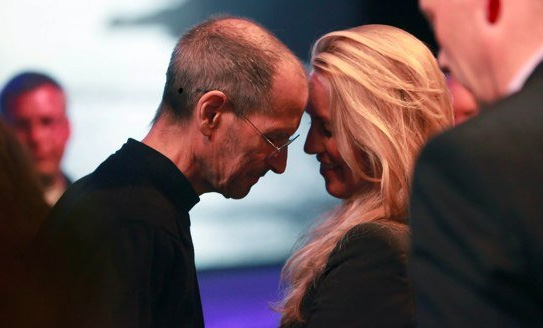
By Sandra Salmans
By now, the story is the stuff of legend. How the tall blonde woman known only as Laurene met with a young Latina in East Palo Alto—a neighborhood bypassed by Silicon Valley’s dot-com boom—every few weeks for mentoring. How the girl confided in Laurene about her difficult childhood. How, without Laurene, she might not have become the first person in her family to graduate from college. And how, as a freshman at the University of California, Berkeley, she learned from a news article that Laurene was the wife of Apple’s co-founder, Steve Jobs—“Silicon Valley royalty,” as The New York Times put it.
As Steve Jobs’ wife for 20 years, Laurene Powell Jobs practiced a low-key philanthropy that matched the style, if not the substance, of her famously publicity-averse husband. In 1997, as a consequence of her experience working with high school seniors on the college admission process, she co-founded College Track, a comprehensive after-school advisory program that las year reached more than 1,600 high school and college students in Northern California, New Orleans, and Aurora, Colorado. Powell Jobs’ contributions to College Track, where she still serves as the chair, are made through Emerson Collective, an organization she established about a decade ago, and which—because it is incorporated as a small business rather than a tax-exempt 501(c)(3)—does not have to publicly report its donations. She is also a member of some half-a-dozen nonprofit boards, including that of Stanford University, where she earned an M.B.A. “If you total up in your mind all of the philanthropic investments that Laurene has made that the public knows about, that is probably a fraction of 1 percent of what she actually does, and that’s the most I can say,” Powell Jobs’ longtime friend and fellow philanthropist Laura Arrillaga-Andreessen—herself a member of Silicon Valley royalty, as the wife of Netscape founder Marc Andreessen—told the Times.
That commitment stands in marked contrast to Steve Jobs’ indifference, if not outright aversion, to philanthropy—an attitude for which he came under harsh criticism during his lifetime. Although some of his greatest fans, including the MacDailyNews blog, have speculated that Jobs gave away millions secretly (one rumor has focused on a very large anonymous donation to a San Francisco cancer center)—there is no paper trail to support such conjectures. On the contrary, Walter Isaacson, Jobs’ biographer, writes that not only was he “not particularly philanthropic,” he was contemptuous of people who “made a display of philanthropy or thinking they could reinvent it.” Although he “admired” Powell Jobs’ work in education reform, Isaacson adds, he never visited her after-school centers. Of course, it’s important to recall that Bill Gates and even Warren Buffet were criticized at one time for being tight-fisted, until they started to give billions away. Had Jobs lived, it’s conceivable that he would ultimately have met the challenge to “think different” in philanthropy as brilliantly as he did in technology.
Jobs’ death in 2011 left Powell Jobs as one of the richest women in the world, with some $12 billion, most of it in Disney stock, in her name. It also gives her greater freedom to lend her voice and spend her money openly on behalf of the causes she supports, and that is precisely what she has begun to do. One of the first issues she has embraced is immigration reform, a natural outgrowth of her focus on education and her personal experience as a mentor.
The Emerson Collective, which didn’t even maintain a website a couple of years ago, currently has an up-to-the-minute site that addresses progress on immigration legislation as well as protecting the environment, education reform, and gun control. Last year she bankrolled a 30-minute film, “The Dream is Now,” about four young people whose prospects are bleak because they are in the U.S. illegally; she took it to Capitol Hill to showcase it to members of Congress, and sat for a rare interview with NBC’s Brian Williams in which she shone as an articulate, earnest advocate, bearing out Isaacson’s assertion that “she is one of the smartest and most grounded people I have ever met.” She is also a deeply private person, like her late husband, and friends say that’s unlikely to change. However, given her commitment “to try to effect the greatest amount of good,” as she told the Times, it’s doubtful that she will be able to pass again as a tall blonde woman known only as Laurene.
Princess Grace Foundation
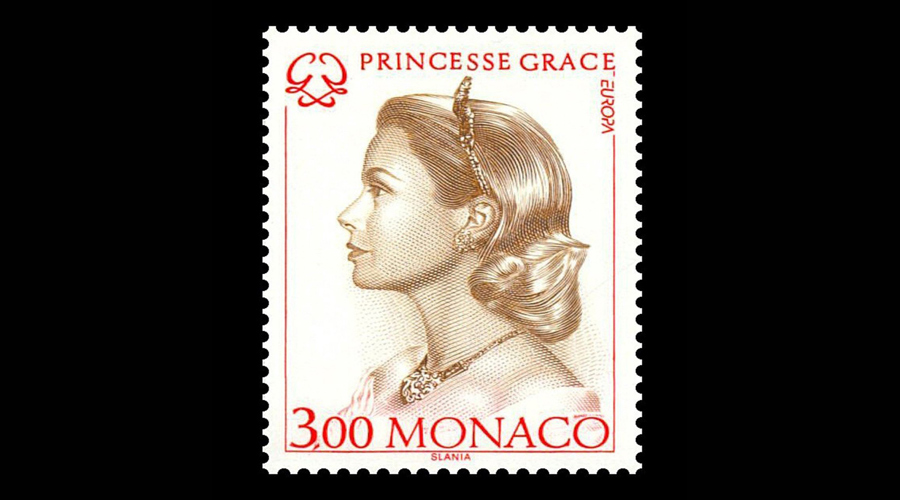
By Bruce Makous
Originally created to salve Monaco's royal family's grief, the Princess Grace foundation celebrates three decades assisting emerging talent in theater, dance, and film.
She was the ultimate fairytale heroine, a radiantly beautiful commoner who’d caught the eye of and later married a prince. So when Princess Grace met an early death in a car crash in 1982, at the age of 52, it was fitting that her bereaved husband, Prince Rainier III, would create a foundation in her own country to foster and celebrate the arts.
The Princess Grace Foundation-USA focuses on the Princess’s primary philanthropic interests—discovering and assisting emerging artists in theatre, dance, and film. The foundation, a publicly supported not-for-profit headquartered in New York City, provides contributions to artists who are beginning their careers, primarily in the form of scholarships, fellowships and apprenticeships. To fund the foundation, the Prince mobilized Grace’s supporters, which included the likes of Frank Sinatra and Cary Grant. (The foundation is distinct from the Princess Grace of Monaco Foundation, which the princess created shortly after her marriage to encourage local artists and crafts people.)

Through its flagship program, the Princess Grace Awards, the Princess Grace Foundation-USA provides the financial assistance and moral encouragement needed by emerging artists so that they can focus on the creative process. Applicants must be nominated by nonprofit arts organizations, and a panel composed of distinguished professionals in theatre, dance, and film annually selects the winners on a competitive basis. Since the Foundation’s inception, more than 750 Princess Grace Awards totaling nearly $10 million have been given to performing artists. Many winners have subsequently achieved public recognition and critical acclaim, including Oscars, Tonys, Emmys, and other awards.
Among the notable winners are Robert Battle, the dancer and choreographer who now serves as Artistic Director of Alvin Ailey American Dance Theater; Yareli Arizmendi, the Mexican actress who played Rosaura in Like Water for Chocolate; Bridget Carpenter, playwright and screenwriter nominated three times for Best Dramatic Series by the Writers Guild of America for her work on Friday Night Lights; and Stephen McDannell Hillenburg, the animator, writer, producer, actor and director best known for creating the SpongeBob SquarePants TV series.
Those Princess Grace Award-winners who subsequently distinguish themselves in theater, dance, or film receive an additional form of recognition—the Princess Grace Statue Award. To date, 54 artists have received this award. A third type of recognition, the Prince Rainier III Award, established in 2005 after the Prince’s death, is presented to eminent artists who have also made significant humanitarian contributions. This award, which includes a grant to the philanthropic organization of the honoree’s choice, has been given to such stars as Julie Andrews, Mikhail Baryshnikov, Twyla Tharp, Denzel and Pauletta Washington, George Lucas, and Glenn Close.
Her family is carrying on her philanthropic legacy. Prince Albert II is the vice chairman of the foundation, and Princess Caroline is president of AMADE Mondiale, the Monaco-based NGO that Grace founded during her lifetime to help children in the developing world. Recently, for example, AMADE has provided support to Syrian children in refugee camps and to families devastated by the typhoon in the Philippines.
In fairytales, the royal couple lives happily ever after. But even when death intervenes, it seems, they can make others’ dreams come true.
Futures

By Lucy Bernholz
The do's and don'ts of citizen surveillance, Sudan and George Clooney.
Celebrities know a lot about being watched. Maybe that’s one reason for actor George Clooney’s enthusiasm for the satellite camera he’s trained on Sudan.
Sudan has been a longstanding interest for the actor. He’s testified before Congress about the country, and in June 2012 was arrested for protesting outside the Sudanese embassy in Washington, DC, against alleged war criminal President Omar al-Bashir. Since 2010 he’s also funded the Satellite Sentinel Project (SSP), an organization that independently observes the volatile border between Sudan and South Sudan. SSP has become not only a witness to genocide, it is opening up a new frontier in civilian humanitarian aid.
Working through partnerships with the Enough! Project, DigitalGlobe, Google and the Harvard Humanitarian Institute, SSP pairs satellite imagery with on-the-ground mapmakers and analysts. The project tracks military movements, records human rights violations, and builds an evidence base of satellite images paired with reports and data from the field. Even in an age of widespread government surveillance, SSP represents a number of ‘firsts.’ It is a groundbreaking application of military technology within civilian peacekeeping; it is a unique partnership between tech companies, scholars and aid workers; and it brings new data to bear on international policy.
For a full year beginning in 2011, the SSP recorded more than 25 violations of existing peace agreements and military movements that threatened Sudanese villages and people. The broad peripheral vision of the satellites also ensured that the movements on both sides—government as well as rebel forces—were captured. Satellite images of mass graves and smoldering villages provided incontrovertible evidence of events previously hinted at by those on the ground. They not only revealed the extent of the damage, but could be knit together to show the direction and pace of destruction in the wake of moving troops.
It wasn’t long before project leaders recognized that the combination of satellite imagery and ground level analysis could be used to predict future disasters. In September 2011, for example, SSP analysts realized that their satellite images of troop movements pointed to a surefire attack on the village of Kurmulk. They took the unusual step, as a watchdog organization, of issuing a warning, and thousands of people were able to flee ahead of the onslaught.
Not surprisingly, the international response to SSP’s images lags significantly behind the technology. For the humanitarian aid community, however, SSP has signaled a sea change. Humanitarian groups are mostly trained to respond to crises, not to avert them. Nonintervention has been a stalwart feature of humanitarian aid for centuries, and a key reason these groups are given access to war zones in the first place. Changing their rules of engagement may mean saving lives in the near term, but could also result in being banned from conflict zones the next time around. Actively shaping the direction of a conflict means new responsibilities and the need for an updated code of ethics.
The SSP is teaching us that new technology can be applied to humanitarian aid faster than we can predict the consequences of doing so. This is often true of cutting-edge technologies. But rarely is it a matter of life or death.
Elizabeth Wallace Ellers
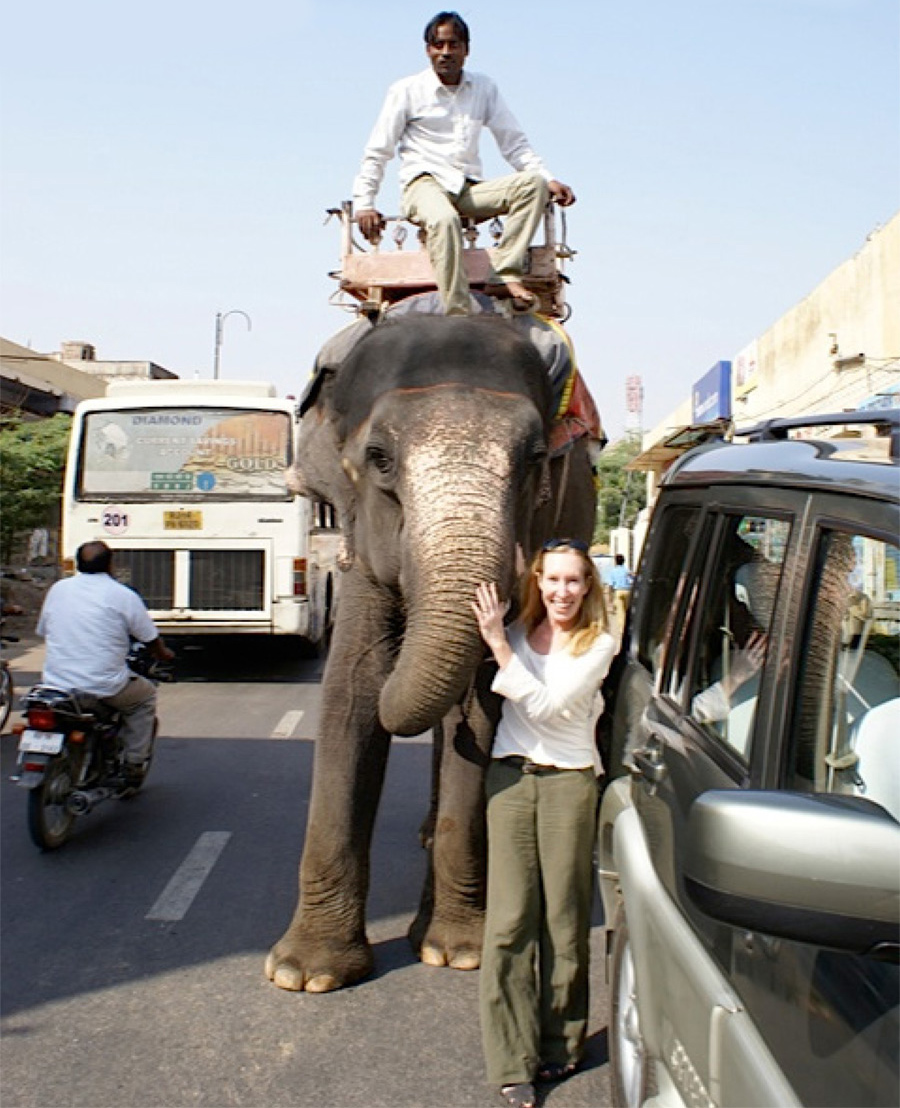
By Bruce Makous
Introducing social innovators directly to philanthropists, Liz Ellers is making global impact philanthropy more accessible to women in her area.
In a way, Elizabeth Wallace Ellers has been rehearsing all her life for the role she’s playing these days in impact philanthropy. After studying international relations at UCLA, Liz spent time in Mexico and Brazil, and then earned an MBA at Columbia University. She worked as an investment banker for years and then embarked, informally at first, on the path to founding her own donor-advised fund in Philadelphia.
Ellers jumpstarted The globalislocal Fund with a few more than a dozen other local women in 2005 with the intention of addressing the root causes of poverty throughout the developing world. In the ten years since, globalislocal’s membership has grown to more than 50 and the group has dispensed more than $2 million in either outright donations or loans as a part of its growing project portfolio, which includes funding for organizations like Root Capital, a nonprofit investment fund that helps finance small agricultural businesses in Latin America and Africa.
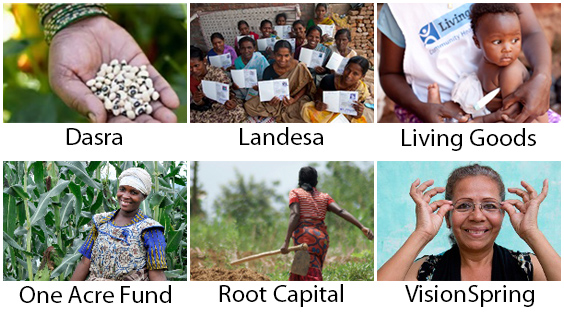 globalislocal's current portfolio
globalislocal's current portfolio
Ellers traces the founding of globalislocal back to her decision to leave Wall Street following the birth of her son; in the early ‘90s, she became involved with collaborative funding and philanthropy out of her own passion for economic development. Even as a well-connected donor, Ellers encountered roadblocks as she developed her own philanthropic portfolio.
“I was just doing this for myself,” she says. “And then I just got a little annoyed. Back then there were a couple conferences that were really the only places you could go to convene with like-minded funders and smart NGO leaders, and, as we evolved, social entrepreneurs. But they were invitation only.”
She more fondly recalls local networks of female philanthropists in her area as a spark and her time at The Philanthropy Workshop, a Rockefeller Foundation education program on strategic giving, as a final step in realizing globalislocal.
“As I learned more and more about the issues—and the impact that is possible—I knew that I had to create a way to share it with others,” she says. “I never, ever intended to do this,” she adds with a laugh. “It got to a point where I had to do it.”
The same Wall Street discipline that shaped Ellers’ thinking for years now pervades the globalislocal structure. The philanthropists are “investors” and “partners” and before an organization is added to the funded “portfolio” a projected social return on the investment must meet minimum requirements. It’s a model built on careful calculation of impact as much as it is on more subjective or emotional social or environmental measures. Metrics include household income, viable crop yields, volume of accessible water, access to health care professionals, and business productivity.
Annual investments from participating partners generally range from $3,000 to $15,000 and Ellers encourages members to meet face-to-face with social entrepreneurs on the ground in Africa, Asia, and Latin America to learn about the issues intimately themselves. Each year, partners receive impact reports that inform their next round of investments. “You’re not just leveraging your money,” Ellers says of the collaborative approach. “You’re leveraging all of your resources. Different people and different foundations have different kinds of resources. It’s knowledge, it’s network, it’s access. People don’t talk about access a lot. Access is sometimes way harder than money.”
Ellers also mentions globalislocal’s ahead-of-the-curve grantee curation as a source of pride: “Our investees are really great,” she says. “We’ve invested in some of these social entrepreneurs before some of the biggest funders in the space have found them.” Besides Root Capital, examples of recently selected social enterprises include the One Acre Fund, which channels loans to farmers in Kenya and Rwanda as they try to increase annual yields, and Partners in Health, which provides patient-centered health care in settings where resources are scarce.
Ellers says that she didn’t set out to make globalislocal itself an all-women group, but she’s embraced the natural development. “Women enjoy collaborating with their peers,” she said a few years ago upon receiving a leadership award from Women’s eNews. “And the majority of the most vulnerable people in the world are women and children. When targeting the causes and consequences of poverty, by definition, we’re targeting women and children. So there’s this great sense of connectedness.”
Still, as gratifying as the results can be, Ellers admits that the type of philanthropy globalislocal pursues is a hard-fought long game. “We focus on solutions to poverty in the developing world,” she says. “Already you’re talking about really challenging, multifaceted, interlocking puzzle pieces. Even when you’re addressing the root causes and providing the access to opportunity for the community to make choices about how to climb up the ladder, these are long term propositions. You don’t go from living on a dollar-a-day to middle-class in five years.”
As for the fund's next steps, Ellers says, "Ultimately, globalislocal's goal is to increase dramatically the number of investors and volume of investments actively engaging these issues. To this end, globalislocal is actively exploring strategic alliances and partnerships in the United Sates and abroad."
Mark Zuckerberg/Priscilla Chan’s $45 Billion Dollar Charitable LLC
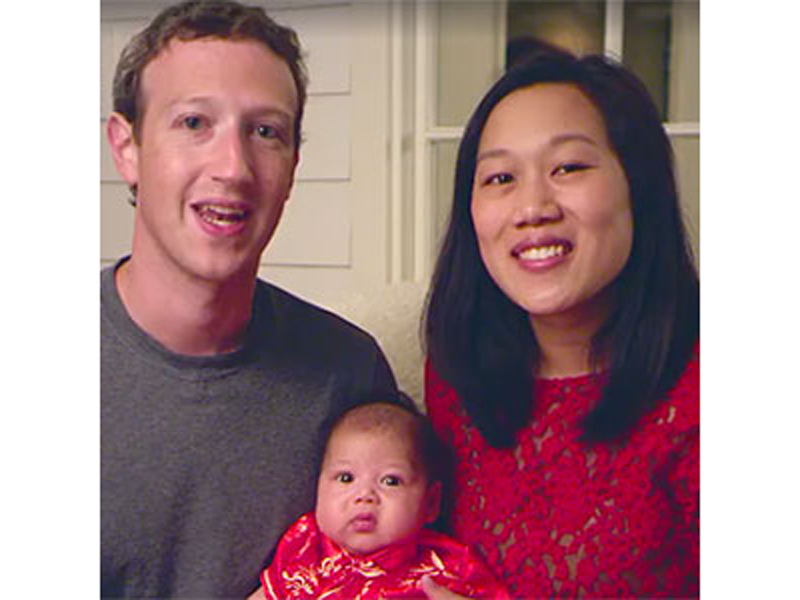
By Doug White
Making Philanthropic History
In December 2015, Priscilla Chan and her husband Mark Zuckerberg, Facebook’s co-founder and chief executive officer, made history — not because of their enormous wealth but because they pledged to use almost all of it to make the world a better place.
The couple pledged to give away 99 percent of Facebook’s stock, which, at the time of the announcement, was valued at approximately $45 billion, making it the largest pledge in the history of philanthropy.
When they made their stunning announcement, they were speaking primarily not to the media but to their newborn daughter Maxima.
In a letter that will undoubtedly rank among the most important that will ever be addressed to Maxima, her parents outlined their profound goals to improve health and education, and to decrease inequality. "Our society has an obligation,” Chan and Zuckerberg wrote, “to invest now to improve the lives of all those coming into this world, not just those already here. But right now, we don't always collectively direct our resources at the biggest opportunities and problems your generation will face."
They then acknowledged one of the more ignored basic truths of philanthropy: fundamental change requires time: “We must make long-term investments over 25, 50 or even 100 years. The greatest challenges require very long time horizons and cannot be solved by short-term thinking.”
Some people were quick to criticize the vehicle the couple is using to make their impact — a limited liability company instead of a traditional public charity or foundation. But the criticism is premature and shortsighted. Scholars and our better nonprofit leaders are coming to understand that new ideas about philanthropy are needed, that the world’s most difficult problems are going to need new approaches. While the traditional philanthropic model has resulted in remarkable social accomplishments, it is inadequate to addressing society’s most intractable and large-scale social problems. We need an addition, re-defined structure, and Chan and Zuckerberg may be doing exactly that.
Perhaps Zuckerberg comes to philanthropy naturally. First came the enormous wealth, even before Facebook went public. In 2010 he joined the Giving Pledge, a group of the world’s wealthiest people who have dedicated at least half of their fortune to philanthropy. (Currently there are 154 people who have committed to the pledge.) He was 29 when he joined, making him the youngest member at the time.
Despite what seems to be the gelling of his philanthropic thinking, Zuckerberg has had no roadmap. Our perception is still that those who give away vast sums of money do so in the context of years of worldly experience. Even Bill Gates, whose wealth also came relatively early on, worked longer to make his money and turn his attention to the broader needs of the world. Yet Zuckerberg and Chan are already consistently topping the lists of the world’s most generous philanthropists.
Still, it’s a learning process. In 2010, Zuckerberg devoted $100 million — his portion of a matching gift totaling $200 million — to help the failing schools in Newark, New Jersey. Dale Russakoff, who wrote “The Prize,” which details the gift and what turned out to be its disappointing impact, suggests that Zuckerberg learned that giving away money is a far more complex and humbling endeavor than he might have expected, a case study, Russakoff said, in the difficulty of translating good intentions into concrete results. Most of us tend to think $100 million can fix almost any problem. But in fact the scale of the problem in Newark dwarfed the size of the gift. In addition, the competing political and business priorities — to say nothing of the parents and children most affected (and, as it turns out, not much was said to them or on their behalf) — were overwhelming.
One key to understanding Zuckerberg, and perhaps it provides an insight to what drives his giving, might be that he can be described as a rebel, an anti-authoritarian. When he was still a high school student at Phillips Exeter Academy, he developed the Synapse Media Player, which would learn people’s music-listening habits. Although both Microsoft and AOL were interested in buying the program and in hiring him, he declined. College beckoned.
By the way, while Harvard was where Zuckerberg created Facebook, the story can actually be traced back to Exeter, which had something called The Photo Address Book so students could keep track of one another. Because the name doesn’t trip off the tongue with ease, for decades the students had been calling it “The Facebook.” In his senior year there, the school put the book online.
Another key, one that hints at an overarching thesis that brings together his business and philanthropic mindsets: Zuckerberg has said that what’s important in starting a company isn’t just to start a company but to “do something,” to go after problems and not do easy things, a philosophy that may have been the driver of his decision to go to college and rebuff offers from corporate America. “A lot of companies,” he once told students at Stanford University, “are operating on small problems.” The goal is to do something tangible. “The most interesting thing,” he said, “is to operate on something fundamental on how humans live. It was fundamental for me. I feel this need really acutely. I wanted this.”
He clearly wants a lot, and it looks like he has the intellect, passion and resources to make the world a better place.
We’re starting to see what that world will look like when the anti-authoritarian is the one in charge.
Robert Redford

By Doug White
The leading man casting Sundance's future.
Snowbound Buffalo, NY, would seem to be an unlikely venue for anyone—let alone an internationally-acclaimed movie star—to find his life’s inspiration. But it was there, stranded in a family-style Italian restaurant in 1970, that Robert Redford—fresh from the success of Butch Cassidy and the Sundance Kid—learned that Hollywood was giving up Downhill Racer, a movie that only the critics loved. Redford, who starred in the film, was told to “let it go.”
Redford is a serious person. He loathes his handsome leading-man stereotype and, despite an iffy academic record—he was asked to leave the University of Colorado after he hosted a few drunken parties—he is articulate and thoughtful in interviews. One way to get a sense of him is to study the roles to which he has drawn. They are usually loners with heart, people who fight against the system. He once said, perhaps with some irony, that Downhill Racer was to have been the first of a trilogy about “the American mythology of success.” (The film has now entered the pantheon of American classics, and Redford’s own performance is widely praised.) The title of his 2013 movie, All is Lost, in which he is adrift on the Indian Ocean, silent and alone, says it all.
So it was typical of Redford to start thinking about what he could do to foster independent movies, which tend to be “D.O.A. in the world of Hollywood studios,” as he once observed. In 1981 he created the nonprofit Sundance Institute in Park City, Utah, an incubator for ideas that would never make it within the rigid formulas of the big studios. Since then, the Sundance Film Festival has become the premier outlet for high-quality independent films—and Redford the behind-the-scenes wizard who works its magic.
Although it isn’t a mega-charity, Sundance is substantial. It raises about $16 million every year and has an annual budget of almost $30 million, assets of about $38 million, and a $16 million endowment. It also stays true to its mission, to help the little guy (or gal)—a goal that Redford also helps achieve through the Sundance television channel for independent film and even the Sundance Catalog, whose sales of American crafts helps support new artists. In fact, in an era when many charities are searching for ways to grow and make better use of social media, Redford has publicly worried that the Sundance Film Festival, the most recognized of the institute’s programs, is getting too large and commercial.
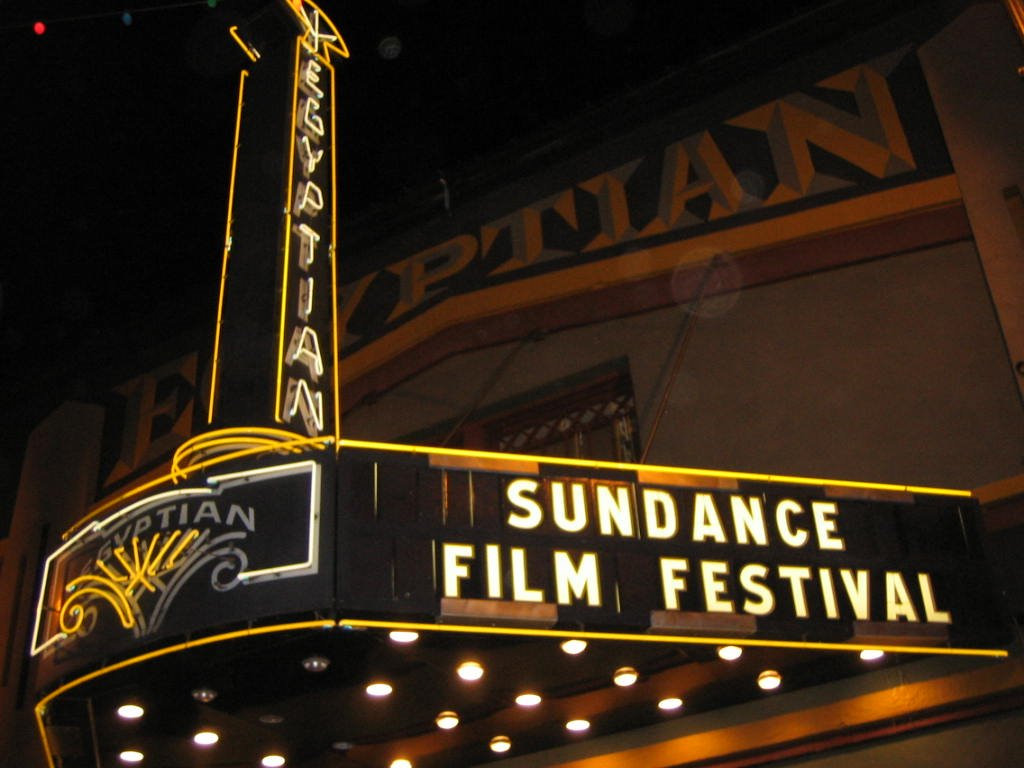
Inevitably, Redford’s causes have infiltrated many of his movies. As the producer of The Motorcycle Diaries, a coming-of-age road movie about Che Guevera, he introduced Americans to some of the political and social issues of South America that shaped the revolutionary. He has also been an outspoken environmentalist, particularly for the Southwest (he has zealously protected from development the Utah property that he acquired nearly 50 years ago), and has promoted that cause through groups such as Greenpeace. Predictably, environmentalism has also found its way into some of the independent films and television programs in which he has played a role, either in front of or behind the camera.
Despite going down in a hail of bullets, it seems, the Sundance Kid may live forever.
Eileen Heisman
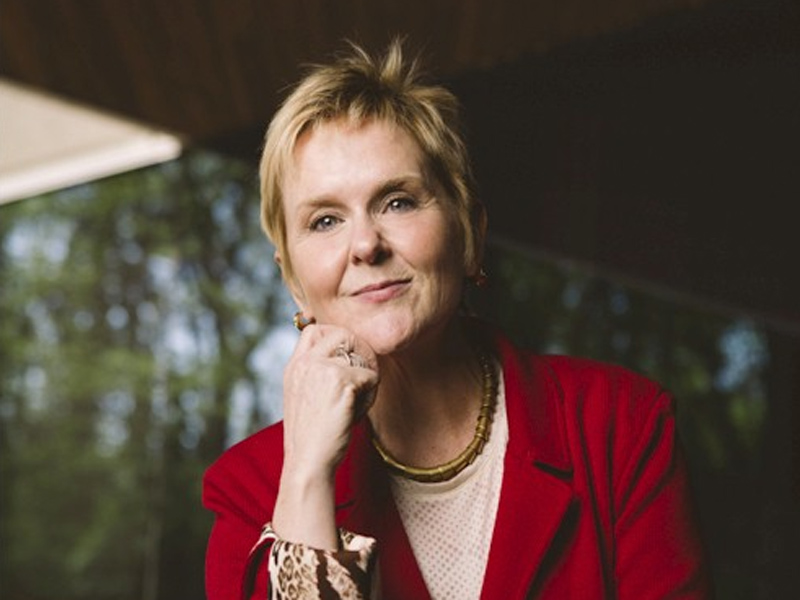
By Doug White
The CEO of the National Philanthropic Trust is going global with the brand and donor-advised funds.
“Charitable giving has a new look,” Time magazine recently reported, “one that is broadening the giving pool and helping keep the dollars rolling into nonprofits even during tough economic times.”
That new look is a method for giving called “donor-advised funds,” or DAFs. This is how it works: A donor opens an account at a “sponsoring organization,” such as a community trust or the charitable arm of a financial services company. While any contributions to the account are immediately tax-deductible, the donor generally has no deadline for disbursing the funds. It’s today’s go-to for philanthropists who aren’t ready to commit their wealth to specific organizations or don’t want the burden or expense of establishing their own foundation. DAFs, reports Giving USA, which tracks the annual growth of philanthropy, “are the fastest growing charitable vehicle in the country.” They have become so popular that they now represent more than $37 billion under management in the United States alone.
Technically, the DAF dates back to 1931, when The New York Community Trust invented the arrangement. However, not much happened for the next 60 years. “People didn’t realize the donor-advised fund model would work,” says Eileen Heisman, president and chief executive officer of National Philanthropic Trust (NPT). But in the early 1990s the Fidelity Charitable Gift Fund received a favorable ruling from a federal appeals court that said DAFs have charitable status, even when they’re under the aegis of an investment firm. Other groups quickly joined in.
Located in the Philadelphia suburb of Jenkintown, NPT, founded by the Pitcairn family in 1996, is today a DAF heavyweight. With more than $1.7 billion in charitable assets under management, NPT ranks among the 25 largest grant-making bodies in the U.S.
Heisman says that DAFs give donors the benefit of professional guidance. “Whether a donor wants to turn an illiquid asset into a gift or create a global grant or a multi-year grant, we hold a mirror up to what the donor wants and reflect best practices in the philanthropic world,” she says. That can include advice on how to structure the gift and outline its goals, as well as ongoing stewardship as donors regularly make their charitable decisions into the future.
But when it comes to how they want their money spent, donors “know what they want to do,” says Heisman. “Donors to DAFs are pretty well informed. They come in with a lot of energy about giving to their causes. They’re engaged philanthropically, many serve on charitable boards, and they’re using us as a way to fulfill their monetary philanthropic goals.”
Still, groups such as NPT do more than distribute alms. “Some people think a DAF is merely a wink for total [donor] control, but it’s really not,” Heisman notes. “Every document clearly states that NPT has the final say over how the money is to be spent. And we reinforce that verbally. We will honor requests that are legitimate, but if you want to go outside things that are legal then we won’t do it.” For example, a gift to an individual from a DAF is forbidden.
Although NPT’s donors are savvy, they still need to be reminded that their wishes might not stand the test of time. Heisman recommends that they include an escape clause in their gift agreements, permitting NPT, usually after a donor’s death, to spend the money on a similar cause if the original intent is no longer possible. “We have the obligation—and undertake the risk—to distribute the money properly,” Heisman says, “and we’ve seen so much that we almost always know more than donors when it comes to structuring the gift agreement. We also tell them that something might be legal now but the laws could change five years from now. Some donors embrace an escape clause in an instant. Others go kicking and screaming. If they never want to change any of their donative intent and if the purpose becomes obsolete, it’s going to be our job to figure something out.”
Congress and the IRS have long struggled with the concept of the donor-advised fund, and in the Pension Protection Act of 2006 Congress did clarify for the first time many definitions and regulations relating to DAFs. Still, the absence of a spending rule worries some legislators. Although foundations are required to spend at least five percent of their assets on their programmatic activities, public charities are not. So, the concern goes, DAFs are nothing more than parking lots where donors can stash money indefinitely and take healthy charitable deductions without actually helping society. The reason the charitable income tax deduction exists is to encourage people to give; the idea is that the foregone tax revenue will help society in ways that government cannot. So legislators might very well think there should be some minimum requirement to ensure that at least some of the deducted donations are actually injected into society’s bloodstream.
But that concern is misplaced, according to Heisman. “Donor-advised funds are actually paying out between 17 and 24 percent, and that doesn’t include overhead, as is the case with foundations,” she says. The National Philanthropic Trust conducts a lot of research on the model throughout the country, perhaps the most of any organization. “The issue about us being these warehouses is not warranted,” she adds. “Money is pouring out the door. We encourage philanthropy.” She sees no need for a required minimum annual payout. In fact, it could be counter-productive. “If you impose a five percent minimum, it may very well become a maximum in people’s minds. It actually could hamper giving. Why would you take a group of entities that are paying 20 percent and say you have to give out five percent per account when the aggregate is humongous?”
Heisman sees her biggest challenge, and perhaps NPT’s biggest opportunity, as one of shaping the future. While there’s no way private philanthropy can ever replace the government’s role in helping society, it can seed some interesting projects. She mentions NIH, the National Institutes for Health, which is a government agency. “NIH won’t fund anything without preliminary findings from smaller experiments, and private philanthropy often funds those smaller experiments. And not just in medicine. Private philanthropy can provide seed money for new ideas to emerge in many areas. “
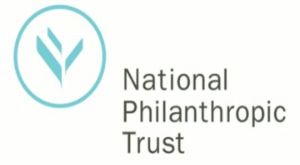
A favorite teacher of Heisman’s once talked to her about “ideas coming from the fringe of society, and that when they mature they become mainstream.” Philanthropic money can be used to attack the root cause of a problem, not just the symptom. “You want to be funding the stuff on the fringe,” she says. “Some of it will become mainstream.” The women’s rights movement is another example. “There was a time,” Heisman says, “when women’s shelters were considered fringe organizations. Rape assistance? That was really radical. Now, nobody thinks they’re radical, but at the time it was difficult. Things shift and then people don’t even remember.”
When she talks with donors, she says she always tells them “not to be afraid of taking a risk. Some of the most creative thinking in the social sector is by people who are in emerging organizations. If the idea doesn’t mature, it doesn’t mean you were a failure. Maybe that idea could be the next big change in the social sector.”
At NPT, the next big change is expansion overseas and the organization is soon going to be offering the same services to donors outside the U.S. that it does domestically. To be sure, Great Britain’s philanthropic landscape is different from America’s. The federal government in the US as well as many state governments has passed legislation to actively promote charitable donations to a degree that few other nations have. It’s still unknown whether the British will take to the American approach, but it’s worth finding out. As Heisman counsels her donors, “Always take risks.”
Divorce
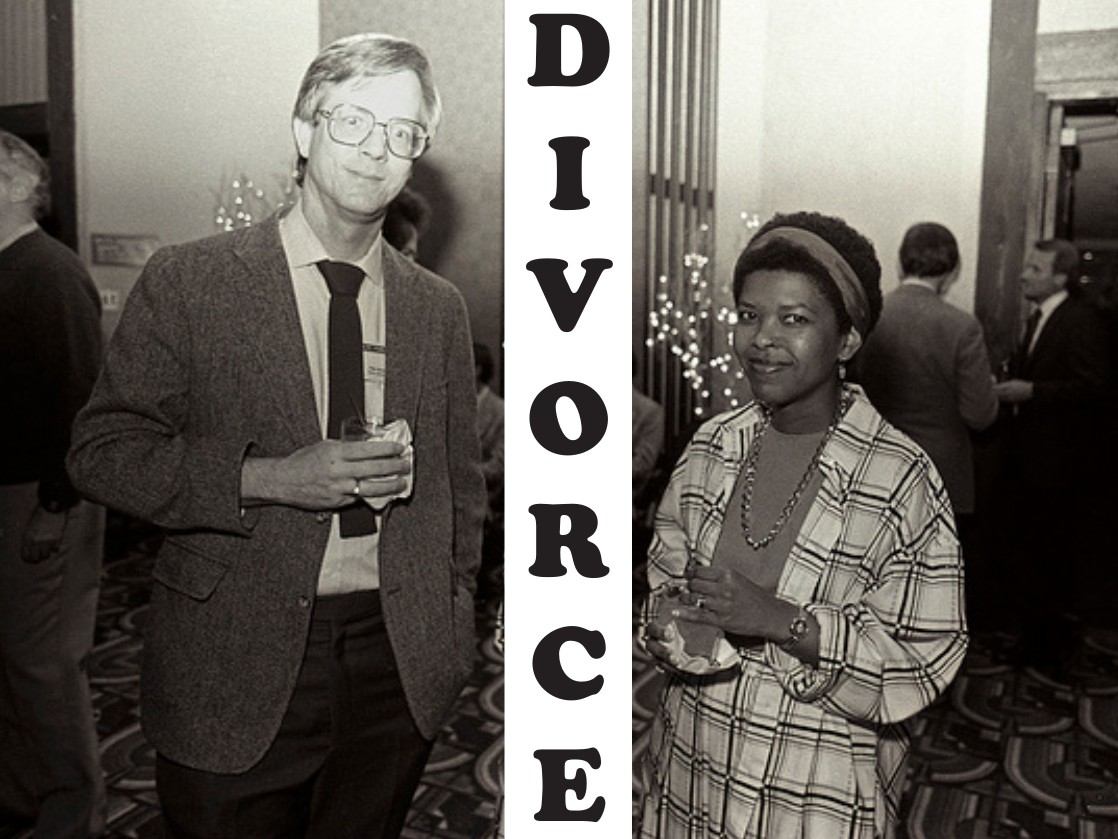
By Doug White
Learning from the Norton divorce.
Peter Norton, founder of the company whose ubiquitous computer software bears his name, sold his firm in 1990 to devote himself to philanthropy. With his wife, Eileen Harris Norton, he ran the Peter Norton Family Foundation, which has given heavily to arts organizations and some social-service groups. In 2000, Peter Norton filed for divorce. As often happens when a large fortune is at stake—Norton’s assets exceeded $100 million—the case was heavily litigated over a period of years. Eileen won the first round when a judge ruled that roughly 87 percent of the proceeds from the sale of the software company were to be considered community property, subject to equal division. One issue not on the table, however, was what would happen to the foundation.
This is an especially tricky subject. A foundation, strictly speaking, is not a marital asset—once money is donated, it is no longer under the personal control of the benefactors. Yet this is a grey area because influence over the foundation is, in a way, a fringe benefit of a marriage. That’s why many divorce attorneys will put the family foundation on the table during negotiations even though it is not a financial asset. “Say there’s a $100 million foundation,” explains William D. Zabel of Schulte Roth & Zabel in New York, a leading divorce lawyer to the rich and famous. “The husband says to the wife, ‘That’s it, you’re out, you have nothing more to say about it.’ I’d take that case in a minute.”
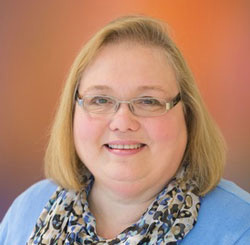 Virginia Esposito
Virginia EspositoThe confluence of two factors—the astonishing growth in the number of family foundations and a national divorce rate that continues to hover near 50 percent—suggests that family foundations will increasingly become an issue in divorce. “People are establishing foundations at a younger age,” says Virginia Esposito, president of the National Center for Family Philanthropy. “Everything in this founder generation is new. And changes in the family, happy or otherwise, are inevitable.”
Established in 1989, Norton's foundation had a market value of some $26 million by the end of 2002, a year in which it distributed more than 100 grants totaling $3 million. The biggest gifts went to the California Institute for the Arts, the Los Angeles County Museum of Art, the Studio Museum of Harlem, and New York’s Symphony Space, which named its concert hall for Norton following a $5 million pledge. A one-time Buddhist monk, Norton has also made some offbeat philanthropic gestures, such as buying the notoriously personal letters written by the reclusive author J.D. Salinger to Joyce Maynard at auction from Sotheby’s for $156,000 and then returning them to their author.
After the divorce, a court order split the foundation 60/40 between the two, with, according to its 2011 IRS filing, a “substantial contraction.” A final return representing 2012 would be prepared, indicating that the foundation, which reported assets of only $50,000 in 2011, would shortly be out of business. Both Peter and Eileen continue to serve as trustees, along with Anne Etheridge, who is executive director.
Of the possible paths for family foundations caught in the middle of a divorce, some are exceedingly civilized. Virginia Esposito remembers an instance where both parties stayed on the board after the split. “They talked about it and decided that what they were doing transcended their personal problems, and now they seem to be doing just fine.” In another case, not only did both exes remain on the board, they were joined by their adult children and a new wife. “They realized the foundation was a part of their selves and have stayed focused on the work,” Esposito says. “It may not be personal property, but it’s part of their personal responsibility.”
Sometimes it’s important to give the participants “some breathing room,” she adds. “It may just be a matter of getting past the immediate difficulties. And you have to factor in the possibility that feelings might change. You could have the husband say, ‘I’m not that involved; you go on ahead with our adult children.’ Then, a few years later, he realizes there’s a space in his life and he wants to be more involved in his community.”
Of course, not everyone can be so calm and rational in the midst of divorce, and one option at the other extreme is to split the foundation in two. This isn’t terribly difficult as a technical matter, although there is some lawyering involved. “The basics aren’t that hard, but for people in that situation everything’s a big deal,” says Jerry J. McCoy, a Washington-based attorney specializing in charitable issues. “She says, ‘Most of the money was from my family,’ and he says, ‘But I tripled it in the boom,’ and she says, ‘But you tripled my money.’ It often degenerates into bitterness and that inability to get along.”
Karen Greene, who heads family foundation services at the Council on Foundations, recalls a number of occasions when a giving vehicle was rolled into two separate ones. For example, Norman Waitt Jr., who founded Gateway Computers with his brother Ted, later established the Andrea and Norman Waitt Jr. Foundation. After the Waitts’ divorce, the fund split into Norman’s Kind World Foundation and Andrea’s Messengers of Healing Winds Foundation.
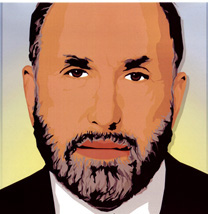 Raoul Felder
Raoul FelderBut the same effect can be achieved more informally. “We frequently make claims that the wife has the right to direct a certain amount of foundation spending after the divorce,” says Raoul Felder, the dean of New York divorce lawyers. “As part of the settlement, the husband gives from his foundation to, say, the New York Community Trust, where she can set up something and control the spending. This is happening as people are getting more sophisticated.”
“Money is a socially prestigious weapon,” says Bill Zabel. “[Women] serve on boards where they have to make a $50,000 or $100,000 annual contribution. Take away that money and you’re causing tremendous harm to her social life. That’s why, in a majority of substantial divorce cases with a foundation, the departing spouse usually has an issue about how to share in the distribution. You can have a foundation giving away a million a year, and she might say, ‘I need $200,000 of that to keep up my contributions.’ So as part of the deal, you might give her the right to designate that amount. It’s usually done as a side letter, not as part of the public document, and the wife isn’t usually on the board after that – they want her out of there.”
Zabel has even seen foundations used for underhanded maneuvers in this realm: “Say a guy has $60 million, has been married 30 years and wants a divorce. So, he transfers $10 million to his foundation and says, ‘We have $50 million to split.’ Does he negotiate and give her certain rights to distribute that $10 million? Or does she say, ‘I should get $30 million, since he gave that money away knowing he would divorce me.’ It’s all arguable and negotiable and litigable. I don’t believe anyone’s ever litigated it—I’ve threatened to and settled—but it probably will be someday.”
The best way to avoid these sticky scenarios, experts say, is to think things through in advance. “When setting up a family foundation, you need to define what you mean by ‘family,’” advises Mary Philips of Grants Management Associates, Boston-based philanthropic consultants. “Set the criteria upfront so it doesn’t become personal. Make it clearly written: in the event of divorce, the divorcing spouse goes off the board—or not. Do we want only lineal descendents? Think of board eligibility in terms of your goals and the experience you want rather than who you want.”
“Ideally, families should treat eligibility in a fairly rigorous way,” says Karen Greene. “This applies not only to the founders, but to later generations. It seems inconceivable when it’s just you, the wife and the kids, but go down a couple generations and you’ve got 20 or 30 people. Someone’s divorced, another one never shows up at meetings. Do you just want lineal descendants? What about adopted children, stepchildren, offspring of gay and lesbian partners? Should your foundation exist in perpetuity, given how much families can change? It can be a ticklish situation, very uncomfortable if you’re the in-law who becomes the ‘out-law.’ It’s always better to make policy in the abstract, but you can’t foresee every circumstance. I remember one gentleman who came up and asked me, ‘How do I keep my daughter-in-law and get my son off the board?”
The Nortons are only one of many examples where philanthropists must think through all the implications of their divorce.
Reid Hoffman

By Kent Allen
LinkedIn's co-founder brings his venture capital savvy to philanthropy.
Even by the frenetic standards of Silicon Valley, Reid Hoffman, 47, is a busy man. He’s been at the center or on the periphery of dozens of start-ups, most prominently as a principal at PayPal and as co-founder of LinkedIn, the modern-day equivalents of—and now just as vital to life as—the personal check and the Rolodex. A venture capitalist who seems to have a finger in every tech pie, Hoffman is “the most connected man in Silicon Valley,” according to Forbes, which gives his net worth at upwards of $4 billion.

His involvement in nonprofits is as wide and deep as it is in his moneymaking enterprises, and he takes pains to apply the same ambition and business sensibility to the socially conscious organizations he supports. His intensity and the diversity of his interests are what you might expect from someone with a degree in symbolic systems (which focuses on different aspects of the human-computer relationship) from Stanford and a master’s in philosophy from Oxford.
In Hoffman’s nonprofit orbit of interest, a primary planet is Kiva, an unconventional “charity” that is more of a lending facility than a donative vehicle. The organization matches up lenders with borrowers for small-scale ventures.
Generally, the borrowers, who dot the landscape across the globe, have an idea for a small business but require as little as a few hundred dollars in startup capital. With few exceptions, they nearly always pay back the no-interest loan in its entirety after their businesses are in gear. While that track record is vital to the organization’s survival, Hoffman sees other benefits: Both lenders and borrowers, he believes, have an opportunity to learn how a small amount of money can make a big difference. He recently gave the organization $1 million so that thousands of would-be micro-lenders—who can invest as little as $25—could get a feel for the lending side of Kiva’s potential power. He is equally enthusiastic about the receiving end of the loans.
“The pattern you want is to empower people to invest in themselves,” Hoffman told TechCrunch, a blog about technology startups, in an interview last year in which he lauded Kiva for making small businesspeople out of ordinary folks who might not otherwise have the chance.
Hoffman takes a similar approach to other nonprofit organizations with which he’s been affiliated, including Do-Something and Endeavor Global. Do-Something resembles Kiva but targets young lenders specifically. Its generation-next edginess was apparent recently on its website: “Join over 2.2 million people taking action,” it urged. “Why? Because apathy sucks.”
By contrast, Endeavor Global, while a nonprofit, is not a charity. It matches up successful businesspeople with prospective entrepreneurs in a mentoring program. Hoffman himself takes on the role of mentor. In a posting on the organization’s website, he offered his “top 10 rules of entrepreneurship.” They included “aim big,” “maintain flexible persistence,” and “look for disruptive change.”
Hoffman says that in college he decided he wanted to try to influence the state of the world on a large scale. “My plan was to become a professor and public intellectual,” he told Director magazine a few years ago. “That is not about quoting Kant. It’s about holding up a lens to society and asking, ‘Who are we?’ and ‘Who should we be, as individuals and a society?’’’ But he soon determined that he could make a greater impact as an entrepreneur—and now he’s trying to help others do the same.
Nexus
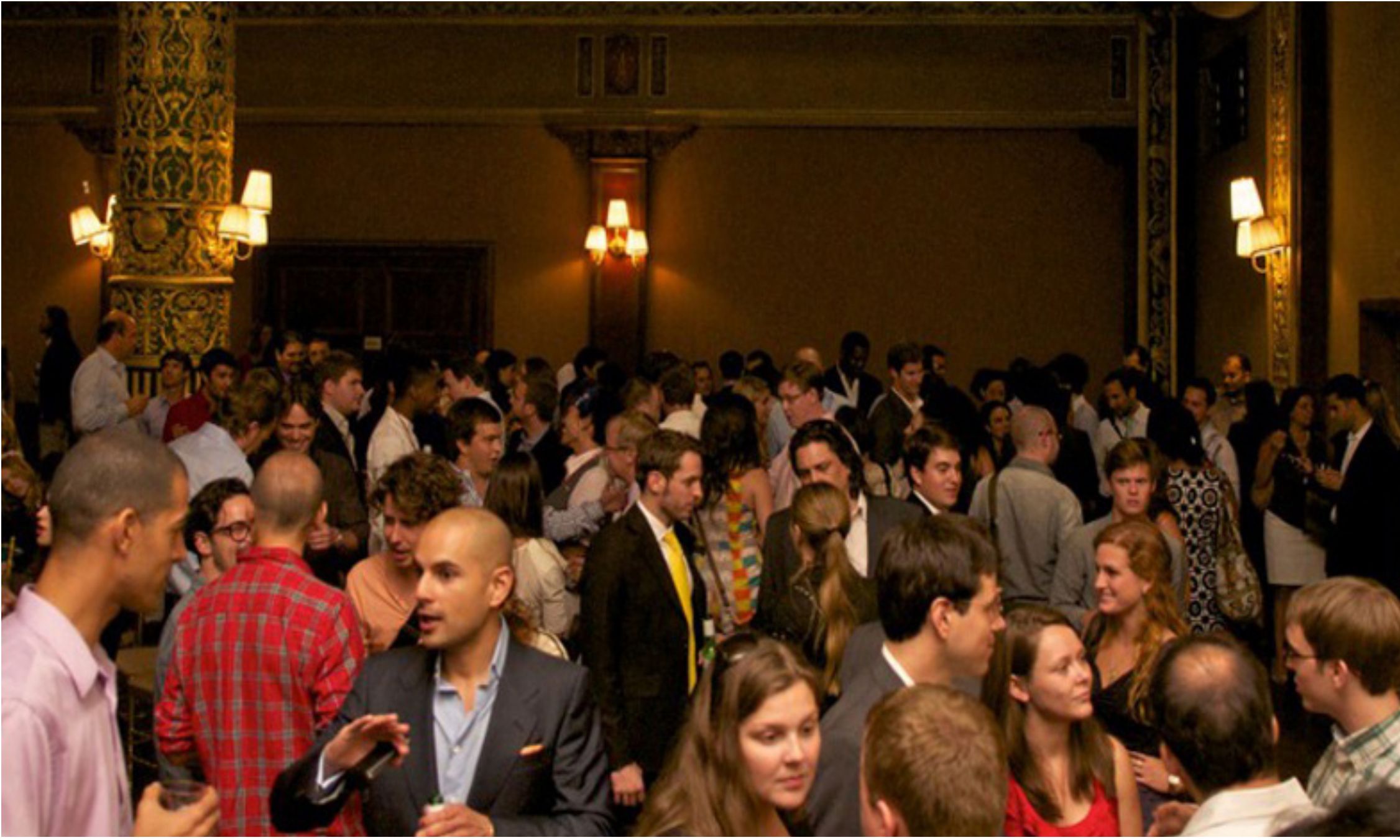
By Jay Balfour
A series of international events aims to catalyze philanthropy in young wealth holders.
Philanthropy is rarely a young person’s game. Tech innovators and entertainers aside, those who can afford to give headline-grabbing sums generally do so later in life, towards the end of a career or in retirement. And with the millennial generation often stereotyped as unemployed, unmotivated, and generally adrift, it would seem unrealistic to look to them for buckets of cash. But next-generation philanthropists aren’t waiting for wealth, and their enthusiasm may be their greatest asset.
In July 2013 about 700 people, most of them young, gathered at the United Nations Headquarters in New York for a global youth summit on innovative philanthropy and social entrepreneurship. The organizing body, Nexus, was founded a couple years prior in partnership with the UN and other governments in an effort to involve young people in a global culture of philanthropy. That year's summit, Nexus’ third, was easily its largest and most exuberant up to that point.
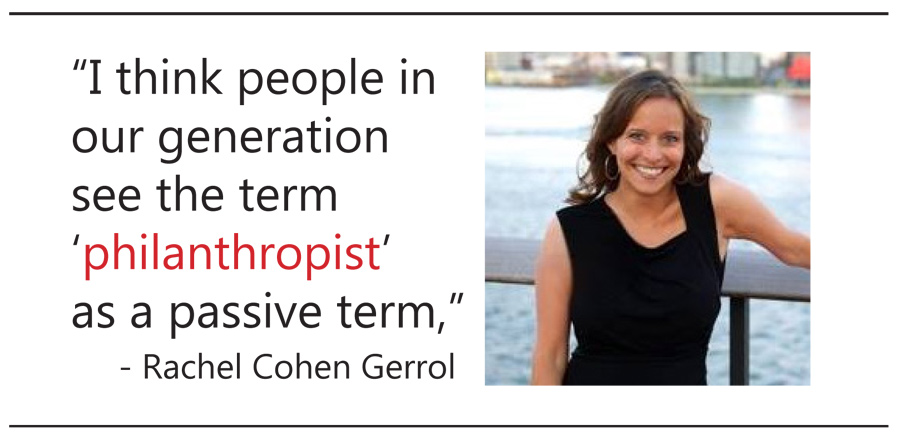
What distinguished this gathering from, say, a dinner of Giving Pledge signatories, however, was not the number of zeroes before a decimal; it was a fundamentally different approach to giving. “I think people in our generation see the term ‘philanthropist’ as a passive term,” Nexus cofounder Rachel Cohen Gerrol said in an interview with Giving Magazine, “like, ‘I’m a check writer,’ and they feel that much of the value they have to offer is not located in their checkbook. If you go back to the larger sense of ‘philanthropist’ as a caretaker or lover of humanity, that would be much more in line with how people would define themselves.”
That’s true even of young attendees who actually have access to a checkbook, such as Zac Russell, the youngest and only next generation member of the board of the Russell Family Foundation (which has an endowment of roughly $135 million). Like many of his peers, Russell has a broader definition of what it means to be a donor. “‘Philanthropy’ means money in modern contemporary [terms], but I think of it as time,” he said during the summit. “I think of it as intention, of making the world possible that you want to see by your actions. It just so happens that in our contemporary world money relates to action.”
In connecting money to action, Russell is in good company at Nexus. “We’ve made this shift from philanthropic giving to philanthropic living for this community,” Gerrol said, “and that means that you’re voting with your dollars every time you purchase a candy bar or a purse just as much as you are when you decide where to write your foundation check to or what you do professionally.” (Notably, the conference gave out goodie bags stuffed with Kind cereal bars and “ethical” treats from Taza Chocolate and Kopali Organics.)
Perhaps nowhere was this concept better embodied than in a conversation during the summit between Kenneth Cole, better known as a designer than as an activist, and his daughter about fashionable philanthropy and clever social marketing. (Cole’s products—“be awear” bracelets, “hot in here” T-shirts about climate change—have garnered publicity and raised funds for causes for years.) In fact, one of the strengths of Nexus’ summits is their ability, as a watering hole for the upscale young, to attract bold-face names. Adrian Grenier, environmentalist and star of the popular HBO show Entourage, helped draw a crowd the first morning. By contrast, veteran civil rights activist and singer Harry Belafonte attracted about 30 attendees and issued a call to action on more ‘60s-style terms. He also added a note of deja-vu. “I’ve been before you before, Nexus,” he said, “because among a number of titles, I’ve also been a beggar. I don’t like it, it tampers with my dignity, but it’s a necessity. What bothers me is how often we have to beg for the same money, for the same cause.”
The distinction between traditional philanthropy and social or impact investing—and the issue of which is the more effective path forward—was reflected throughout the summit. Ladislav Kossar, the manager of a philanthropic investment group in Eastern Europe, asked attendees to place their own endeavors on a spectrum, from “pure philanthropy” to investments with an expectation of financial return. The response resulted in a watershed moment: It became evident that the room was full of entrepreneurs and self-starters, not traditional givers.
Judging from such measures, young people at the summit were the actors rather than the funders of change. Heirs such as Zac Russell were far outnumbered by ambitious entrepreneurs that need money like his family’s, and the summit is less an explicit bridge between the two than it is a meeting ground. At the same time, as Gerrol noted, many participants wear more than one hat. For example, she pointed to Lana Volfstun, who is the executive director of One Percent Foundation, which is trying to encourage giving circles and philanthropy within the millennial generation; she is also from a very philanthropic family and has been involved with two programs for young philanthropists in the Jewish community. “She might come off as a social entrepreneur, but she’s also a philanthropist,” Gerrol noted.
 A Nexus delegation.
A Nexus delegation.Of the dozens of panel discussions, most were on issue-driven topics related to equality and awareness, with names like “How Pop Culture Can Drive Social Change” and “Women and Girls.” Yet there were also a few breakaway sessions for current and prospective possessors of wealth: “Taking on a Role in the Family Foundation” and “How to Distinguish Oneself When a Parent’s Legacy Casts a Wide Shadow.”
It’s likely that Nexus’ future lies in its potential for breaking down walls between the askers and the givers in its own ranks. For now, the summits have done an impressive job in sparking a dialogue—and with it the recognition that some of this dialogue has been held before. “These are conversations that were percolating in the hallways and the hidden corners of conferences about similar issues twenty or thirty years ago,” Gerrol noted. “If you look at who were the students in the ‘60s, they were radicals and revolutionaries, and they are now people in their sixties today. I think as we build a movement of youth, we need to be standing on the shoulders of those who laid the foundation for this movement to exist, and to learn from them.” For today’s older donors, that could be as good as it gets.
Don & Mera Rubell
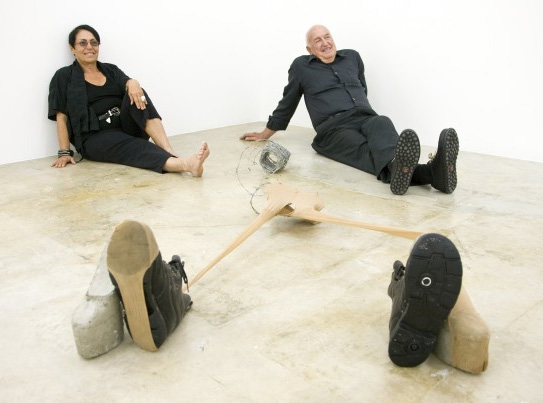
By Holly Howe
The Miami-based couple think of themselves as custodians with a grand purpose, sharing their 5,000-piece modern art collection with the world.
What to do when you have an art collection with over 5,000 pieces, including works by Keith Haring, Paul McCarthy and Jeff Koons? Share it with the world, according to Don and Mera Rubell, the Florida-based visual-art power couple. “You discover very quickly on this journey that you’re just the custodian of the important cultural artifacts of our time,” Mera once noted, in an interview with the Financial Times. “So how could you not make them available to the public?”
The Rubells never worked in the creative industries; Don, 74, is a retired gynecologist and Mera, 71, is former president of sportswear company Ellesse. But when they started dating, after meeting in the library of Brooklyn College in 1962, they discovered a shared passion for art and together explored artists’ studios and galleries in their free time. Initially there wasn’t much money to buy art—Don was in medical school and Mera worked as a teacher—but they allocated $25 a month from their $100-a-week income and set up the Rubell Family Collection shortly after they married in 1964. When Don’s brother, Studio 54 cofounder Steve Rubell, died in 1989, the Rubells inherited assets estimated to be worth $200 million. They sold those, freeing up cash to invest in hotel real estate and contemporary art.
Today, they have amassed what is widely regarded as one of the most important and edgiest private collections of contemporary art in the world. They are still collecting, an undertaking to which they devote about a quarter of their money. And, more than ever, it has become a family affair, particularly since their son Jason joined the board, and all three have to agree on a piece before they acquire it. (Their daughter Jennifer, an artist herself, opted out of the process to avoid any conflict of interest and to focus on her own career.)
In 1993, they took over a disused 45,000-square-foot facility in Miami where the Drug Enforcement Agency had housed confiscated goods, converted it into a 27-room museum and opened it to the public. The building displays some of their collection as well as their library of over 30,000 art tomes.
The Rubells see the museum as a way to educate people about contemporary art. “The major contribution of these private/public collections is it fills the gap for young people to see the art that’s being made today,” Don stated in an interview with the Art Economist. “I remember when our kids went to Duke and Harvard, and both of their art history courses ended with Andy Warhol... It’s a twenty-year lag. The young people never see what’s being produced that relates to their issues and passions.”

Staging exhibitions at most publicly-funded museums can be an arduous and time-consuming process, but the Rubell Family Collection has the agility to put a show together in a matter of months, and can display new acquisitions quickly. They also regularly loan items from their collection to other museums, and even transport entire exhibitions from their own museum to other institutions, such as the Milwaukee Art Museum, the Corcoran Gallery of Art in Washington DC, and Fundación Banco Santander in Madrid.
But not everyone has welcomed the Rubells’ gifts. In the early 1980s, Don wanted to set up an art bequest with his alma mater, Cornell University, but the school’s art museum declined the gift, citing lack of space. A few years later, when Cornell reconsidered the offer and went back to the Rubells, administrators discovered it was no longer on the table. A shame, as they missed out on works by the likes of Jean–Michel Basquiat and Cindy Sherman.
Haldun Tashman
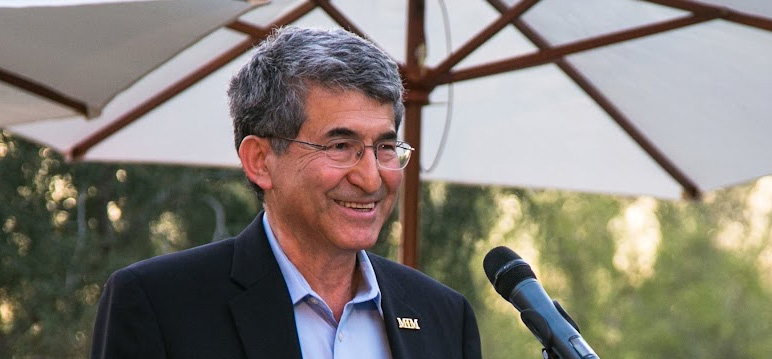
By Sandra Salmans
Exporting the community foundation model, entrepreneur Haldun Tashman is connecting the Turkish diaspora through interest-based giving.
When Haldun Tashman, a Turkish-born entrepreneur living in Arizona, hears about another successful Turkish-American like himself, he feels more than a glow of kinship, he makes a note. Tashman, 69, is the founding chairman of Turkish Philanthropies Fund (TPF), a New York-headquartered community foundation that seeks to recruit potential donors in the U.S. and connect them to social projects, primarily in Turkey.
Tashman established TPF almost nine years ago, when the sale of a medical supplies business he’d built in Phoenix allowed him to pursue his passion. Having earned an MBA at Columbia as a Fulbright Foreign Student Fellow in 1968, in 2003 he created the Tashman Fellows program, which provides support for young Turkish or Turkish-American MBA students. But he wanted to do more, and his experience as a trustee of Arizona Community Foundation showed him how. He commissioned one of his bright young Tashman MBAs to conduct a feasibility study and, encouraged by the results and the examples of funds established by the diaspora of many other countries, formed TPF, to promote philanthropy among Turkish- Americans. At the same time, he and his wife, Nihal, established the first community foundation of Turkey in his hometown, Bolu.
In the years since Tashman and his three partners founded TPF, it has raised more than $16 million, of which it has distributed more than $11 million in grants. Most of the funds go to education, much of it specifically to gender equality programs designed to educate and empower women and girls. Like all community funds, TPF offers advantages to philanthropists who choose that route: it screens nonprofits to advise donors about where to make the best social investments; follows up to ensure the funds have been properly used; and handles the onerous paperwork that can defeat the most committed philanthropist; to do this, Tashman travels in a continual loop between Phoenix, New York, and Istanbul.
TPF money has gone to build village schools, provide disaster relief after the earthquake in eastern Turkey in 2010, and support traditional rugmaking in Anatolia. One donor in New York, rather than throwing a birthday party for her daughter, raised $20,000 to buy books for girls in Turkey, Tashman notes. In Bolu, the Tashmans are using their own community foundation to support the development of an infrastructure for philanthropy, as well as an early-education project. “There are foundations in Turkey, but everybody wants to do their own thing,” says Tashman, who hopes to bring people together to share best practices and give more strategically.
But to thrive, he notes, TPF must recruit the next generation of Turkish-Americans. TPF has a junior board of younger directors, U.S.-educated professionals with dazzling credentials. One of the Tashmans’ daughters is a donor to TPF, and Tashman believes he is providing seed capital through his fellowships. By the time the fellowship program wraps up, he estimates, it will have sent 50 fellows out into the world. “I’m looking for one or two who will be very successful and will do great things in philanthropy,” Tashman says, “and I’ll feel, mission accomplished.”
Len Blavatnik
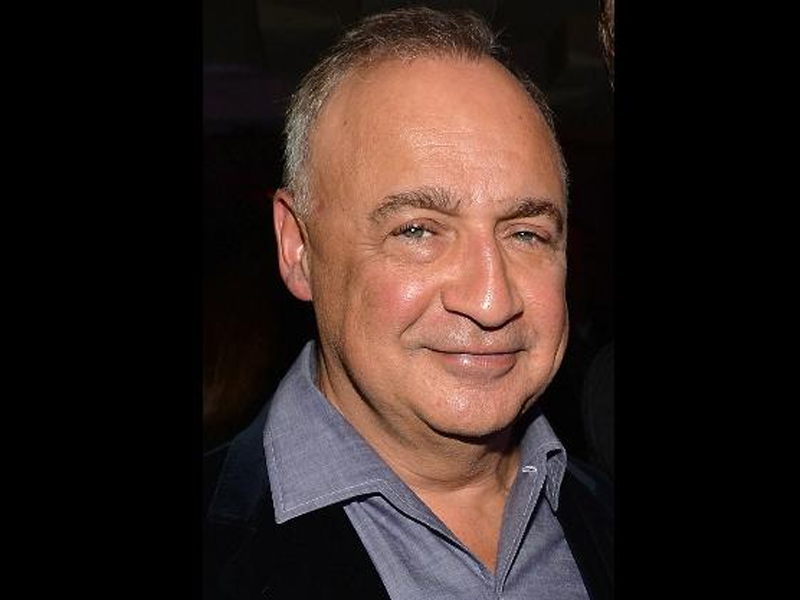
By Doug White
A Soviet emigrant to the US, Blavatnik is becoming a generous establishmentarian in education and beyond.
“Leonard Blavatnik is making possible a new way for Oxford to contribute to the world.” So began the September 2010 tribute by Lord Christopher Patten, Chancellor of the University of Oxford, in his remarks acknowledging Blavatnik’s “once-in-a-century” $120 million gift, which established Europe’s first major school of government at the oldest university in the English-speaking world.
Blavatnik, like many other donors with an eye on making transformational gifts, is not new to philanthropy.
Through his family foundation, he recently donated $50 million to fund the “Blavatnik Award for Young Scientists” at the New York Academy of Sciences. The money is helping to expand the number of people who are eligible to receive the award, which will now be open to faculty-rank scientists across the United States age 42 or under. The idea of “young” is key. According to Eric Lander, a director of the Broad Institute of Harvard and MIT, “Young scientists drive scientific discovery and innovation. They feel urgency and impatience. They think creatively and boldly. While we must support promising scientists at all levels, young scientists are a critical resource that we must nurture for the good of the whole scientific enterprise.”
But while academic pursuits feed the mind and eventually improve lives, Blavatnik is also putting his money where it will have immediate impact on people who desperately need it. He gives much every year to Colel Chabad, an Israeli charity that operates a network of soup kitchens and food banks, dental and medical clinics, daycare centers, widow and orphan support, and immigrant assistance programs. Founded in 1788, Colel Chabad is the oldest continuously operating charitable organization in Israel. Blavatnik’s support provides food every month for 5,000 families in 25 Israeli cities and towns.

In 1978, during a period of mass emigration for Soviet Jews, Blavatnik left his home in the Soviet Union for the United States. After then earning advanced degrees at Columbia and Harvard, his business career took off. He founded and is chair of Access Industries, a privately held multi-national company headquartered in New York, that invests in natural resources and chemicals, media and telecommunications, and real estate. In 2011 a subsidiary of Access bought the Warner Music Group for $3.3 billion.
As his generosity shows, Blavatnik tends not to think of starting new charitable enterprises; what makes his gifts noteworthy is his well-funded focus on improving what’s already working. There might be no better example, and thus an explanation for his comfort in giving away so much of his wealth, than his bet on one of the world’s premier educational institutions—a grand gesture meant to fuse history with the future. In Lord Patten’s words: “Oxford will now become the world’s leading center for the training of future leaders in government and public policy—and in ways that take proper account of the very different traditions, institutions and cultures that those leaders will serve. It is an important moment for the future of good government throughout the world.”
True enough. But even so, his gifts might say as much about the man, and his vision of what’s right in the world, as it does about the institutions that he supports.
The Top People
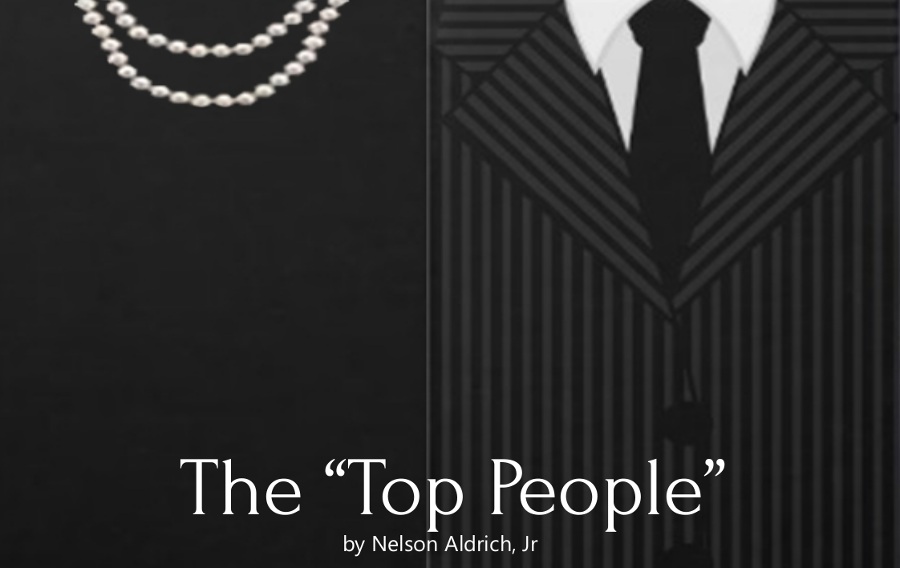
By Nelson Aldrich, Jr
The fate of almost everything that's good, true and beautiful in America is in the hands of that exclusive group called trustees.
Do you remember Jean-Marie Messier? A little over a decade ago, in New York City’s philanthropic circles, the then chief executive of the Franco-American company Universal-Vivendi was the toast of the town. Literally (in that fund-raising season Messier was toasted at benefits for the New York Public Library, the Appeal of Conscience Foundation, and the Robin Hood Foundation) and figuratively speaking, too. At the time the Whitney Museum and the Museum of Radio and Television had made him a trustee; he was being considered for the board of the Metropolitan Opera; and his wife, Antoinette, was on the board of the New York Philharmonic. Less than a year later, with Universal-Vivendi’s stock in free fall and his own corporate vainglory under harsh scrutiny in Paris and New York, Jean-Marie Messier was toast. The moral of the Messier story was summed up by the woman who had wooed him for the board of the New York Public Library, Elizabeth Rohatyn, wife of the investment banker and former ambassador to France, Felix Rohatyn, and herself a notably public-spirited figure in the city. “When new top people come to New York, everybody wants them,” she said.
Let’s unpack that. “Top people” is an obviously enviable social niche. We all want to be ‘at the top’ in some category or other—a top dermatologist, say, or a top golfer at the club, or a top government official, or a top stamp collector. But to be among the top people is a different kind of wonder.
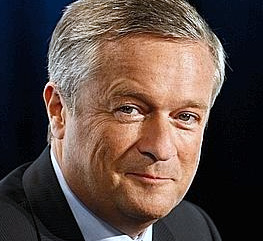 Jean-Marie Messier
Jean-Marie MessierAnd to discover who belongs in it and how they got there, you need only look at the second clause of Elizabeth Rohatyn’s sentence. Who is “everybody” and for what, exactly, are the top people wanted? Jean-Marie Messier’s story holds the answer. “Everybody” refers to the guardians of a city’s nonprofit, nongovernmental institutions— principally other top people—and what they want from new top people is money, and as much as possible. In the course of Messier’s brief sojourn among the top people of New York, for example, he committed himself and his corporation to giving many hundreds of thousands of dollars to the civic institutions that had honored him with their toasts and, much more importantly, with a seat on their board of trustees. For all intents and purposes, in American society today “top people” and “trustees” are hyphenated terms, and the hyphen is a placeholder for money.
This arrangement, in reality as on paper, is unique in the modern world, and a bit breathtaking on the rare occasion someone takes a closer look. Trustees, as a group of people, often have in their charge an astonishing portion of the entire high-culture heritage of the nation, a very large part of its educational, scientific and medical institutions, ideological seedbeds of social and foreign policy called think tanks, agencies of social service and economic betterment, and vast and growing chunks of the country’s land itself.
For well over 200 years the system has straddled the encroachments of government bureaucracy and politics on one side and the clutch of private enterprise on the other. Protecting the tradition was precisely the intent of the Supreme Court in the famed Dartmouth case of 1819 that decided to create and protect a civic space where private money could accomplish public purposes in the unending struggle against misery, ignorance, and ugliness. The system is also the envy of some European politicians who want “voluntary taxation” to relieve them of the onus of having to support their nation’s cultural heritage with direct taxation. Italy’s Silvio Berlusconi, for example, before his more recent controversy, wanted to take the alarming step—alarming to some lovers of art, anyway—of “privatizing” the glorious museums and churches of Italy.
Everywhere these days one hears loud cries for more “transparency” and “accountability” in corporate governance. But when it comes to the governance of nonprofits, there is only silence. A case in point: Business Week once ran an excited story about the bold drive of Harvard’s then president, Lawrence Summers, to reform just about everything in the university, and the grim opposition he was running up against from just about everyone. Everyone, that is, but the trustees (called The Corporation). This handful of men had chosen Summers as president, presumably after listening to what he wanted to do in that office, and after giving him firm assurances of their support. But Business Week did not so much as mention Harvard’s trustees.
This may be changing, however. Scandal has a way of attracting inquiry and inquiry can reveal structures that underlie the story of who did what to whom. The fact is that opportunities for abuse of trust by trustees are abundant in nonprofits, and some abuses are getting front-page coverage these days. The board of Boy Scouts of America is under surveillance by the media for its struggle with gay rights. Susan G. Komen, the cancer charity, recently underwent a leadership change in the wake of a scandal involving a board decision to deny funding to Planned Parenthood and continues to draw ire for its CEO’s grandiose salary. The Hershey School in Pennsylvania, with its $12 billion endowment, has been under siege by some of its most loyal alumni because of perceived conflicts of interest on the part of board members.
A few voices murmur of crisis in American trusteeship. There are too many nonprofits and too few available trustees. For one thing, a position that once brought little but honor now holds the possibility of dishonor as well, through liability to prosecution. For another and more important thing, trusteeship is at risk of becoming an onerous task and of going the way of other forms of civic participation. The problem seems to be one of time. Fifty years ago, most trustees were recruited from the ranks of the more or less leisured class, so-called old money.
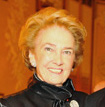 Elizabeth Rohatyn
Elizabeth RohatynBut old money being almost by definition these days no money, its representatives have been replaced by new money (“new top people,” as Ms. Rohatyn put it)—that is, by folks who, again almost by definition, are extremely busy making money. And though this talent makes them attractive as donors, it might make them less so as competent, attentive trustees.
A talent for money-making is often paired with a penchant for ‘free market’ solutions to nonprofit problems. There was a time, for example, when the galleries of the new museum of German and Austrian art on New York’s museum mile were open three days a week, while the museum shop and the restaurant were open four. Or, to take a more poignant example, consider the case of the passionate and sole supporter of a modern dance group who asked one of his businessmen trustees to help him decide whether to carry on in the face of modest ticket sales. The businessman quite properly replied that very few, if any, dance groups made money but that he hadn’t supposed his friend had gone into it to get rich. The man was so dismayed at this verdict of the marketplace that he abandoned his passion forthwith.
But the principal infection that new-money trustees carry with them onto a board is called “corporatization.” The infection comes in many forms. One is commercialization, whether it’s the ascendancy of shops and restaurants in the calculus of institutional performance, or a university’s determination to flog its science faculty’s research products, or the near universal “branding” of great and proud institutions. Centralization is another guise, as essentially feudal structures are replaced by command structures with swim-or-sink performance guidelines. Still another is “consumer sovereignty,” as proudly traditional private schools, for example, are obliged to bend and break every ancient custom to suit student and parent demand. Another is a penchant for bold financial practices, such as the hedge-fund and other alternative investments that in the recent recession financially imperiled not a few well-endowed American universities, several in the Ivy League.
Critics of the corporatization infection seldom have any idea of what should be done about it. One can hardly blame them. It’s embedded in the culture and an assumed moral imperative of growth and competition. Yet every one of the problems (never mind the cultural issues) raised by corporatization demands unusual judgment from the people who hold the institution in trust for the public, and their employees. One sign of the strain in the system is the proliferation—in business schools, law schools, public-policy schools, and divinity schools—of courses in philanthropy and nonprofit management. The Third Sector is rallying to protect its turf, or maybe to negotiate its surrender. In either case, they have no one to do it with but the trustees—a.k.a. the top people.
Fun•lan•thro•py
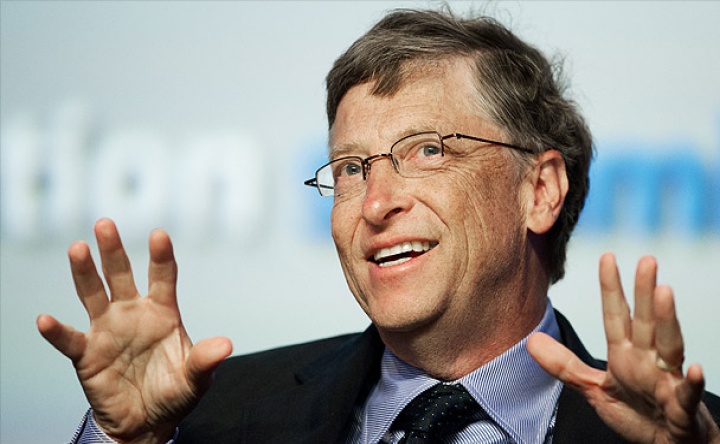
By Roberta d’Eustachio
Philanthropists everywhere are talking about "Fun" in philanthropy. What does "Fun" mean?
When Warren Buffet gave over $30 billion to the Bill and Melinda Gates Foundation, one word turned up consistently in the media coverage: "fun."
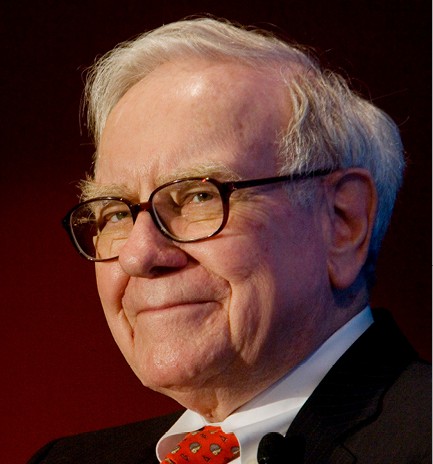 Warren Buffet
Warren BuffetThe foundation’s official announcement of the gift read, “Warren’s wisdom will help us do a better job and make it more fun at the same time.” Buffet himself explained his decision by saying, “Over the years I had gotten to know Bill and Melinda Gates well, spent a lot of time with them having fun and, way beyond that, had grown to admire what they were doing with their foundation.” On the Charlie Rose show, Bill Gates said of Buffet, “The thing that stunned me the most after I met Warren … was that he was really having fun. I knew how to have fun, but not at that level.”
Observers like PC Magazine’s John Dvorak picked up the thread: “[Gates] will now have the stature of a King rather than that of a savvy entrepreneur. Big difference, and more fun.”
Here at Giving Magazine, that got us thinking. Is fun an essential element of philanthropy? Should philanthropists expect to have fun? What kind of fun? Is it possible to have too much fun? Clearly it’s important for anyone to enjoy their work, if they want to do it for long. On the other hand, the word “fun” conveys a sense of frivolity that seems wholly out of place when talking about responsible giving.
Which is why Alexis de Raadt-St. James, a philanthropist based in San Francisco, cringed when she heard Gates use the word. “The first thing that came into my mind was, this is too flippant,” she said. “Somebody didn’t coach him very well.”
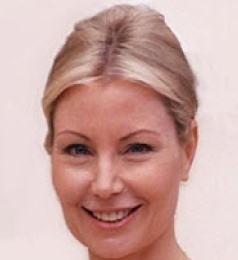 Alexis de Raadt St. James
Alexis de Raadt St. JamesDe Raadt-St. James, who is the CEO of her family’s Althea Foundation, is deeply engaged with a portfolio of causes that are about as un-fun as can be imagined: mental health, depression, suicide and death. She was spurred into philanthropy by a series of traumatic events, including the deaths of loved ones and the 9/11 attacks, which left her shaken and anxious to help others. She has no interest in gala balls. “I don’t like the word fun at all,” she said. “I think it’s so trivializing.”
So when she heard the coverage of the Buffet gift, she sat down and wrote Gates a letter, explaining that, as a fellow philanthropist, she didn’t think that “fun” was the best word to use, if only because it would give people the wrong idea about philanthropy. “I would never use that word to describe what I do,” she said. “I work very hard at what I do.”
But even a short conversation reveals that de Raadt- St. James does draw great pleasure from her work, even when it has nothing to do with fun at all. Furthermore, it is clear that the pleasure helps drive the work and ultimately makes her effective.
Among de Raadt-St. James’s proudest achievements, for example, is a death-notice protocol – basically, a conversation guide that can be used to help health care professionals, military personnel, or friends and family notify others of the death of a loved one in the best possible way, minimizing the trauma experienced by both the bearers and the recipients of the shocking news. Her own personal experiences and subsequent conversations with soldiers and others convinced her that people need help navigating these singularly painful moments.
“I’ve had grown [military] men in my office in tears, telling me, ‘It killed me to say this. It killed me to talk to these parents,’” de Raadt-St. James said. So she spent years and over a million dollars to develop a death notification guide based on the highest psychological and medical standards. Today, her protocol is available to the public for free, and it is used by the U.S. military and the U.K.’s Scotland Yard.
And as serious as such a project is, de Raadt-St. James readily admits that she enjoys both the process and the results. Developing the protocol allowed her to combine her skills in education, science and communications. Now that it is in use, she gets a steady stream of letters and emails from users who tell her how much her work has helped them. “These are things that are helping change people’s lives,” de Raadt-St. James said. “It’s not glamorous, it’s not sexy, but it is fulfilling. Incredibly fulfilling.”
While that may not be “fun,” exactly, it is close. “Fun, I think, is another word for fulfillment,” she said. “And I receive great rewards from what I do. Handing someone a dollar won’t change their lives. But giving someone a modicum of hope, that can be transformative.”
Ultimately, de Raadt-St. James’s problem with Gates’ statement was more semantic than anything else. Her concern was that the foundation sent the wrong message about its seriousness. But if managing huge ambitious projects worth billions of dollars is “fun” for Bill and Melinda Gates, she said, then that can only be a good thing; it will increase the chances that they’ll stay engaged and be effective.
Kevin Murphy believes in fun, and he’s not afraid to say it. Murphy runs the Berks County Community Foundation, just outside of Philadelphia and is also the Chair of the Council on Foundations, a membership group based in Washington, D.C., including the Bill and Melinda Gates Foundation.
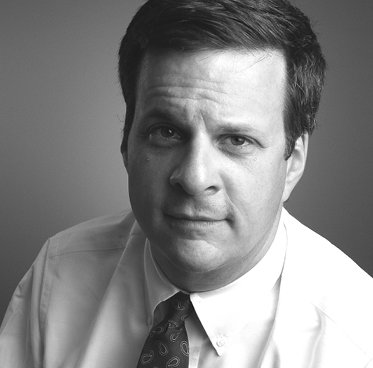 Kevin Murphy
Kevin MurphyMurphy’s is the kind of foundation that gets involved in every kind of project imaginable, from scholarships to environmental protection to historic renovations. Doing so requires him to deal with donors large and small, from first-timers to long-timers. When he spoke to Giving, he was in the midst of preparing a dinner for prospective donors. His menu included tilapia in a mango-tequila sauce. Fun was definitely on the evening’s agenda.
But for Murphy, “fun” means a lot more than a nice dinner party. Fun means engaged, effective donors. “Fun and effectiveness – it’s not a very big leap,” he said. “None of us do very well at a job that we don’t enjoy. Whether you’re a CEO or a basketball player – it doesn’t matter – you’ve got to enjoy what you do to be effective at it.”
So when Murphy is getting to know a particular donor, one of his first challenges is to find out what is going to engage that person. That, in turn, requires some careful probing. “I ask, when you wake up at night, what are you worrying about?” he said. “Because [having] fun is about making an impact, so you don’t have to worry about it anymore.”
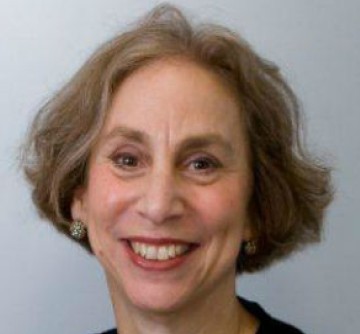 Melissa Berman
Melissa BermanMelissa Berman, CEO of Rockefeller Philanthropy Advisors, echoed Murphy’s words. “The issue of fun is a very powerful one for many of the donors we work with,” she said. Donors who enjoy themselves and their work are more engaged, make more gifts, and ultimately stay longer in the field, she said. “We think it’s in the interest of the nonprofit sector for philanthropy to be engaging and addictive.”
Like Murphy, Berman’s first step with a prospective donor is to help them chart a course that they will enjoy following. She sits down with clients and looks for the answers to four sets of questions: • First, what are your motives? What brings you to the field? Why are you giving? What do you hope to get out of it? • Second, what issues engage you? Is there a particular area of concern? • Third, do you have a preferred approach to solving the problem? • Do you want to work locally, or globally, or at a policy level, or a direct service level? Do you want to use a tried-and-true method, or experiment with new approaches? • And finally, Berman asks, how, specifically, do you want to be involved? Do you want to be heavily engaged? Do you want to stay in the background? Do you want to travel the world? Do you have obligations that keep you close to home? Armed with answers to questions like these, Berman said, she can help clients avoid getting involved in things that they don’t enjoy. “Philanthropy is a voluntary decision,” she said. “If it’s something you have to do, it’s work. If it’s something you have to pay, it’s a tax. Philanthropy shouldn’t be work, and it shouldn’t be a tax.”
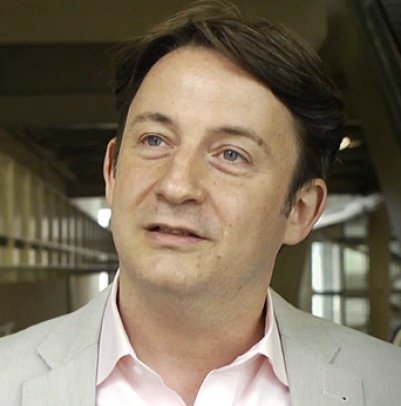 Andras Szanto
Andras SzantoAnd just as those who advise donors must consider the pleasure principles, so too must those who solicit donations. “People are motivated by pleasure,” said Andras Szanto, an advisor of the Wealth & Giving Forum, a New York-based organization that helps high-value individuals and families network among themselves. “Why shouldn’t philanthropy be like anything else? We are in a very unusual stage in history where we have a large number of people who can ask, ‘If I’m not having fun, then why am I here?’”
Institutions and organizations have no choice but to consider their prospective donors’ definition of “fun,” he explained. “The other day I was at the opening of the fall season at one of the major music organizations here [in New York]. The gala, you know,” he said. “And I looked over the audience, and half of them are in their tuxes and gowns. But the other half is in their regular concert-going attire. And I’m thinking to myself that this institution may be in trouble a few years down the road. One generation’s fun is not another’s.
“As we go through a cultural change in philanthropy, as a new generation comes in, the definition of fun changes. They might be trying to attract people to a gala who would rather be in a tent in the rain forest.”
So the word ‘fun,’ despite its lightweight implications, actually represents a profoundly important concept for everyone in the philanthropic field. Advisors need to consider it to help donors make good decisions. Would-be grantees need to consider it in order to attract donations and keep donors engaged. Donors need to consider it if they are to understand which of countless options for investment and involvement suits them best.But is there a danger in too much fun? There is, givers and advisors say, and it arrives when the donor’s pleasure takes precedence over the work needed to serve the philanthropic mission. “I suppose that the dark end of this is a form of narcissism – you’re just in it for yourself,” said Szanto. “As with anything, there are extremes. You don’t want philanthropy to turn into an action sport.”
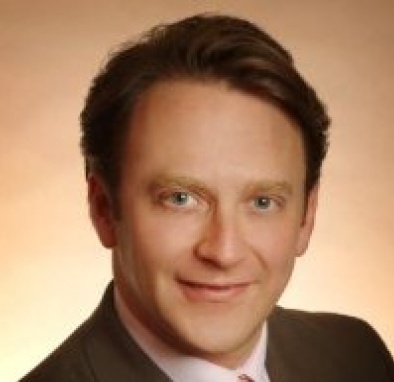 Keith Whitaker
Keith WhitakerThe solution, donors, advisors, and grantseekers say, is to make sure that the giver understands the recipients' intention and that the goal is not to have fun, but to make the work fun. Keith Whitaker, a philanthropist in his own right and also a fellow at Boston College’s Center on Wealth and Philanthropy, has seen people get in trouble by aiming for fun as an end in itself. “Almost every client we see comes in with this as an underlying psychic state: ‘I want to have fun with my kids in our foundation,’” he said.
The problems come, Whitaker said, as the work – along with conflicting opinions about the work – piles up. His solution is to steer such donors away from questions about what they want personally, and towards questions about what their grantees need.
Focusing on the outcomes has the ironic result of making the work more fun. “One of the best things that an advisor can do is say, ‘Your fundamental instincts are correct. It’s your money, and just think of the great things you can do with it that will add to your happiness and your family’s happiness.’” Whitaker said. “What’s made it more fun [for many families] is really being clear about the family’s roles, and understanding the recipients’ needs – looking to others.
“I’m not trying to distinguish happiness from work. Happiness is work. Do I want my life to be about sitting back and drinking margaritas? When I talk to folks, I always say, ‘This is going to be lots of fun for you. And it’s also going to be a lot of work.”
If anyone understands that work is the critical element of successful giving, it’s Mario Morino, the Cleveland- based philanthropist who chairs the Venture Philanthropy Partners and the Morino Institute. What makes a successful philanthropist, Morino said, is not the ability to have fun, but the drive to do the work in the first place. In his experience, that drive is rarely fueled by a desire for pleasure.
 Mario Morino
Mario MorinoInstead, it is powered by deeper forces. “I don’t think ‘fun’ drives somebody,” Morino said. “I think their enduring values are what drives them. The thing that makes the human soul persevere is purpose.” Morino’s personal purpose is to help impoverished children. This springs from a core belief that everyone is entitled to the same shot at education and success that he had. “I was not rich in money, but I was rich in family, and teachers and so on,” said Morino. “I had a great life. I go back to that same neighborhood and now it’s really rough. Those kids don’t have one thousandth of the chance I had to live the American dream.”
The fun he gets from the work comes through the particular methods he uses to pursue his purpose – setting up new projects and watching to see if they thrive. “I love building something,” he said. “The joy comes from building and solving.”
Thus Morino finds a fun means to address a deeply motivating purpose. His challenge to any would-be philanthropists that he meets is to identify their own purpose first, before they think about fun things to do. The purpose is the driving force; the fun is the grease that keeps the wheels turning. Without the driving force, he says, no amount of fun will keep a donor engaged beyond a check-writing level.
Philanthropists’ purpose may come from their religious beliefs, their family’s values, or even from tragic events that changed their life’s course (like de Raadt-St. James’ string of personal losses). But the purpose has to be there.
“If I don’t see one [a purpose] in place, then I know they’re not going to stick,” Morino said. “What is it you really want to do? Know that. Maybe you don’t tell anybody, but know it. Otherwise, you start smoking your own fumes. The whole thing is designed to make a donor feel like God. Fall into that and you start making bad decisions.”
When Morino heard the Bill Gates interview, he immediately recognized the spirit of the fun-loving, problem-solving entrepreneur in action. “I don’t know Bill, but I know a lot of people like Bill,” Morino said. “What they’d say is, ‘This is a bear of a problem, and really tough to solve, and it’s going to be fun to try to solve it.”
But he also recognized a man with a mission that goes beyond pleasing himself. And indeed, if one goes beyond the initial coverage of the Buffet-Gates gift, it becomes clear that both Buffet and Gates are motivated not by a desire to have fun, but a desire to solve a specific kind of global injustice.
In the Charlie Rose interviews, it is obvious that the two men richly enjoy each other’s company, and that they have a lot of fun together. But both Gates and Buffet stressed that they share a desire to grapple with the kinds of health and education challenges that the Bill and Melinda Gates Foundation has embraced. “Bill is an American, but he’s basically a citizen of the world,” Buffet told Rose. “He has a world view. He thinks that the child in India is as valuable as the child next door, and he lives it. It comes out in how his foundation operates.”
It is the last point that sealed the deal for Buffet when it came time to put his billions to work for the public good. Like so many philanthropists, Buffet and Gates are clearly not afraid of fun. They recognize its utility. But just as clearly, they recognize that if the responsible philanthropist is to have fun, it should be fun with a purpose.
Jeff Skoll
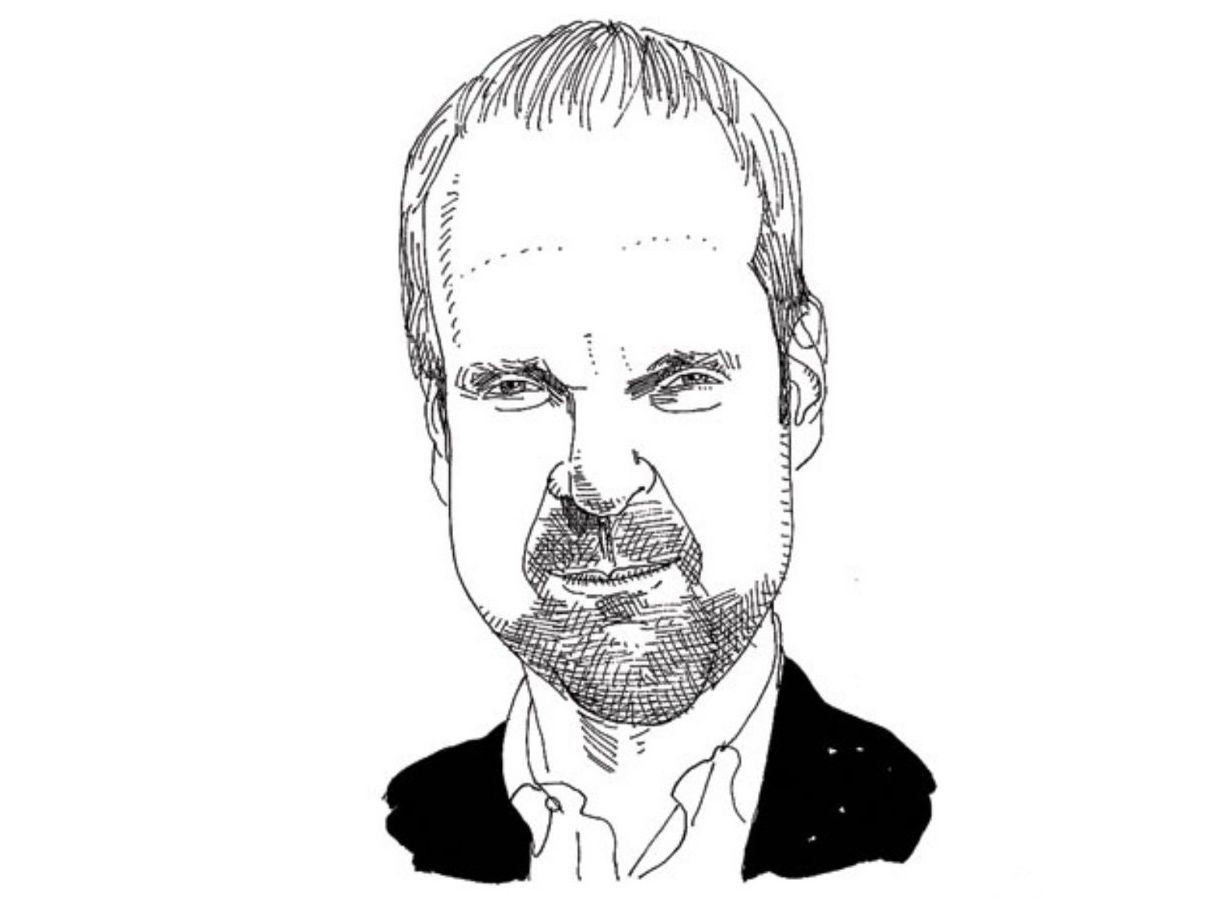
By Cheryl Chapman
Skoll's rise is a tale of ingenuity and a belief in the power to change the world.
As a weedy teenager growing up in Montreal, Jeff Skoll harbored an ambition to be a writer in the vein of dystopian novelists Aldous Huxley and George Orwell “and get people interested in big issues—and try to make a difference.”
Today, Skoll, 50, who made his fortune by the age of 34 as the first full-time employee and first president of the online auction site that became eBay, is trying to build a more Utopian world in which “self-enlightened empowerment” reigns supreme and connected individuals bring about world change. Quoting one of his heroes, the late John Gardner (founder of Common Cause and Independent Sector), Skoll says that he is interested in building “a sustainable world of peace and prosperity” with a simple approach—“betting on good people doing good things.” He has already parted with half of his net worth, an estimated $3.75 billion,
Skoll focuses much of his considerable personal wealth and business acumen on social enterprises, working through a number of organizations, some of which bear his name: the Skoll Foundation, Oxford University’s Skoll Centre for Social Entrepreneurship and its annual World Skoll Forum; his Capricorn Investment Group that supports such ventures as electric cars, solar panels, and rice plantations in Tanzania; The Skoll Global Threats Fund, which confronts the greatest dangers our world faces today; and Participant Media, which has produced more than 30 socially motivated movies and in August of 2013 launched TV network Pivot to 40 million homes. Most recently, in November, Skoll announced a $10 million endowment to help launch a new Center For Social Impact Entertainment at the UCLA School of Theater, Film, and Television

The Skoll Global Threats Fund targets issues such as climate change, water scarcity, pandemics, nuclear proliferation and, what he considers the most worrying threat, the lingering conflict in the Middle East, “the hardest thing I’ve bitten off,” he says. “When anyone tells me I can’t do something, I stop listening.”
In a recent Huffington Post interview he spoke about the skepticism he faced in Hollywood when he launched Participant. “I just wanted to make good quality films that were about something and not worry so much about whether they were successful commercially or not,” he recalled. “And they’ve done just fine commercially—clearly there is an audience for this kind of thing.” That’s a characteristically modest statement for films that have harvested four Academy Awards, out of 18 nominations, and are now referenced worldwide. His film North Country is credited with influencing the signing of the 2005 Violence Against Women Act. Participant’s blockbuster documentary, An Inconvenient Truth, is common viewing in classrooms around the world, and has unquestionably influenced the debate around climate change.

The Skoll Foundation, founded in 1999, offers grants to budding businesses, schools, and services for communities in need. Its approach is highly engineered with a focus on so-called inflection points—opportunities for outsized results. It currently supports 74 entrepreneurial organizations, or what it dubs internally “Uncommon Heroes,” in about 100 countries, granting around $23 million in 2011. Beneficiaries include Gaia Amazonas, a nonprofit that is attempting to pull endangered land in the Amazon back from the brink and has helped protect Colombia’s forests encompassing one-fifth of the entire nation. It is funding “weather-makers” like Sakena Yacoobi, founder of the Afghan Institute of Learning, which since 1995 has sustained education and health programs despite the Taliban’s opposition, and William Foote, an investment banker who has developed a leading model to help Latin American farmers adopt accessible and sustainable practices.
So, how is Skoll doing? He admits that the jury is still out. “For all the things we’re doing,” he said, “I don’t know that it’s enough. The social entrepreneurs are great and making a difference in the world. The movies are doing well and having an impact. But there are still major problems in the world. I don’t know what’s next.” He’s mulled over the idea of entering politics. “Maybe that’s the next frontier—to really engage politically—because that ultimately is where the power is held.”
Still, in a relatively short time, Skoll has become a prominent voice in philanthropic circles. In 2013 he appeared alongside Muhammad Yunas at the Forbes philanthropy conference at the United Nations on market- based solutions to global poverty, and on a separate occasion he dined with Michael Milken, Bill Gates, and Rwanda president Paul Kagame. In 2012, Canada awarded Skoll its highest civilian honor, the Order of Canada, for his wide-ranging philanthropic work. The Order carries the motto Desiderantes Meliorem Patriam—”They desire a better country.”
That’s certainly a fitting way to characterize Skoll. Another might come from one of the films funded by Participant Media—Waiting for Superman, an analysis of the US education system. It could be argued that Skoll has earned the right to Superman’s cape—though modesty would no doubt prevent his putting it on.
Gilbert Brownstone

By Holly Howe
The Swiss-American art collector thumbed his nose at American foreign policy with his biggest gift yet.
Gilbert Brownstone likes to say that he has a “Cuban heart.” The American-born art collector holds the country in such high esteem that in 2010 he donated 120 artworks to the National Museum of Fine Art in Havana, all channeled through his namesake foundation established in 1999.
The gift, which included works by major 20th-century artists like Andy Warhol, Marcel Duchamp, Pablo Picasso, and Joan Miró, was a significant coup for the museum. Brownstone, who personally delivered the art, was awarded the Cuban Medal of Friendship for his support.
Brownstone, who is in his early 70s and arrived in France at the age of 17 and studied at the Sorbonne, is a Swiss national but constant traveler, dividing time between the United States, Paris, and Central and South America. He worked at a contemporary art museum in Paris, the Picasso Museum in Antibes and the Israel Museum in Jerusalem, and later opened his own gallery in Paris.
When that closed, he created The Brownstone Foundation in 1999 with the mission of supporting projects and establishing charities within the scope of “cultural and educational development.” Besides donations, of which the Cuban gift is one of its most spectacular, the foundation has loaned pieces of art to institutions around the world. The foundation’s beneficiaries include New York’s Museum of Modern Art and the Pompidou Centre in Paris.
 Gilbert Brownstone standing next to an Alexander Calder piece.
Gilbert Brownstone standing next to an Alexander Calder piece.Still, Brownstone has made the Caribbean island nation his special priority. In addition to gifts of art, he’s underwritten the creation of a 2,000-square-foot community center in the El Cotorro neighborhood of Havana (the project awaits final approval), as well as a new rehearsal space at the Havana Dance Centre; he’s supplied musical instruments to community groups; and initiated in 2002 and continues to fund the Noemi prize. Although the prize was originally intended to grant Cuban artists—dancers, musicians, and writers as much as visual artists—a three-month residency in Paris, in 2008 its scope was expanded to include artists from members of the Bolivarian Alliance for the Americas, a trade group which was founded by Cuba and Venezuela as an alternative to NAFTA and includes Latin American countries with socialist-leaning governments.
In fact, Brownstone’s philanthropy has carried a strong political message. When he donated art to Havana, he dedicated that gift to the so-called Five Heroes, Cuban spies imprisoned in the United States since 1998 for their alleged role in shooting down two planes piloted by an anti-Castro activist group two years earlier. In 2011, Rene Gonzalez became the first of the five to be released and returned to Cuba after serving 13 years in an American prison. Two years later, a second prisoner was released and more recently, spurred by the easing of the decades-old American trade embargo on the island, the final three of the remaining Heroes were granted release in a prisoner exchange with the U.S. in December.
Brownstone is also on the board of the Center for International Policy, a liberal group that works on issues such as U.S.-Mexican border policies, deforestation and, of course, re-establishing ties between the U.S. and Cuba. Even before the rekindling of state relations between the two countries late in 2014, Brownstone was long building his own bridge to Cuba.
The Anonymist
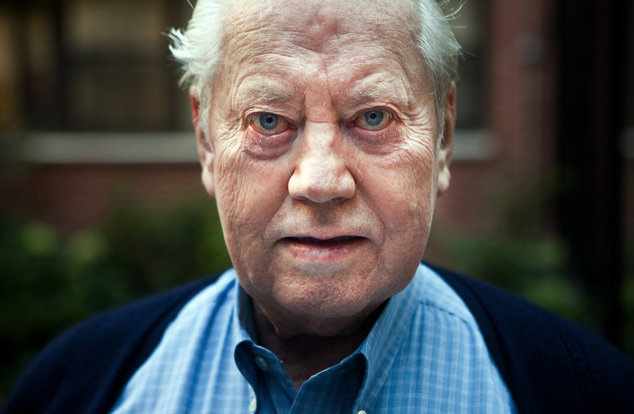
By Sandra Salmans
Once the masked marvel of anonymous giving, Chuck Feeney now preaches the gospel of “giving while living.”
At one time, Chuck Feeney would have done everything in his power to keep his name out of this article—and off this site. He was so completely committed to his brand of covert philanthropy that beneficiaries were warned that his gifts would be snatched back if they revealed the source; funds were conveyed so clandestinely that some university dons fretted they’d be suspected of receiving laundered money. Yet his contributions were so large that when, inevitably, word of his magnanimity began to leak out, many in the philanthropic community automatically assumed that every “anonymous donor” was Chuck Feeney.
And, in many cases, they were right. Although the ranks of anonymous donors are, by definition, unnumbered, Feeney has surely been among the most generous. Over the past 30 years, he has given billions of dollars through his foundation, Atlantic Philanthropies, to a wide range of causes, starting with his alma mater, Cornell University, spreading to the entire university system in Ireland—and to the peace process in Northern Ireland—and more recently encompassing large-scale projects in education, science, health care, and other areas in Vietnam, South Africa, and Australia as well as the United States. In 1997, when a business transaction finally outed him, Time declared, “Feeney’s beneficence already ranks among the grandest of any living American.”
But in the past 17 years, having been forced to shed his cloak of invisibility, Feeney has become an eloquent—if still low-key—spokesman for philanthropy, and specifically for “giving while living.” In 2011 he signed the Giving Pledge launched by Bill Gates and Warren Buffett to encourage initially only the wealthiest Americans to commit to giving the majority of their wealth to good works either during their lifetime or after their death. (Feeney chose the first option, and Atlantic Philanthropies is slated to spend down its assets and go out of business by 2016.) He has allowed the press to tag along on his visits to donees; expounded on his views in a one-hour documentary about himself; cooperated in a biography, “The Billionaire Who Wasn’t,” by Irish journalist Conor O’Clery; and accepted honorary degrees and other recognition, including induction into the Irish American Hall of Fame. He has even released previous beneficiaries from their vow of silence. “The idea of anonymous giving was good, but eventually we became synonymous with anonymous,” Feeney told O’Clery. “It became evident we were kidding ourselves.”
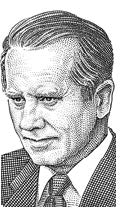
All this amounts to a transformation for a man whom Forbes once called “the James Bond of philanthropy.” In his biography, however, Feeney notes one constant: “I had one idea that never changed in my mind—that you should use your wealth to help people.”
Although he is a modest celebrity today, at least in philanthropic circles, Feeney is unchanged in other respects, too. He remains a deeply private person, spurning the displays of wealth he could easily afford in favor of a simpler life that includes off-the-rack suits, $15 watches, and economy-class plane tickets to visit Atlantic beneficiaries. While he thrives on competition, money, for him, is just a means of keeping score. Growing up in blue-collar New Jersey, Feeney won a scholarship to the Cornell School of Hotel Management and then—through a combination of luck, street smarts, and sheer hubris—embarked on a business selling cars, perfume, and liquor to U.S. servicemen and tourists in Europe. That experience led to the founding of Duty Free Shoppers (DFS), a chain of airport shops that, capitalizing on a surge in international tourism, were an almost immediate success. But because DFS was privately owned by Feeney and three partners, it satisfied his penchant for secrecy. One reason Feeney was able to fly under the radar for so long was that the source of his fortune—as well as its uses—went undisclosed for years. In 1984, he transferred his sizable DFS stake to Atlantic. It wasn’t until he sold Atlantic’s DFS shares to a publicly-traded company in 1997 that Feeney’s cover was blown—and, with that, his curious identity as the world’s leading anonymous donor.
Those who know Feeney—and many more who don’t—have struggled to explain his obsession with secrecy, particularly when it comes to giving. Feeney likes to recount the story about his mother, a nurse, who used to jump into her car to pick up a disabled neighbor as he struggled to walk to the bus stop, insisting that she was going his way. Some family members have suggested that he became used to operating covertly in his intelligence work during the Korean War, a pattern reinforced when he was growing DFS without stirring up the competition. Still others point out that Feeney insisted on a low profile when he and his family—which ultimately included five children—lived in Europe during the 1970s, a time when criminal and political gangs over the border in Italy frequently kidnapped wealthy children for ransom. Feeney has also said that he did not want to be besieged by requests for donations, or to discourage other contributors from giving to a worthy cause.
Then there’s the critical role played by Harvey Dale, a Harvard Law professor and founding president of Atlantic Philanthropies, whom Feeney has described as the most influential person in his life. It was Dale who introduced Feeney to the writings of Maimonides, the 12th-century Jewish philosopher who said that it was best if the giver and receiver didn’t know each other, and Dale who pointed out that anonymous giving was favored in both the Sermon on the Mount and the Koran. Dale also urged Andrew Carnegie’s essay, “Wealth,” on Feeney, who has distributed copies to family and friends. Although Feeney resisted Carnegie’s lavish lifestyle, he responded to the steel magnate’s view that the rich had an obligation to use their assets responsibly to help others.
Feeney will be 85 when Atlantic Philanthropies allocates its last grants in 2016. At that time, he can probably—and gratefully—embrace a less visible lifestyle. But his name is inscribed among the world’s great philanthropists. He is Anonymous Donor no more.
The Community Foundation
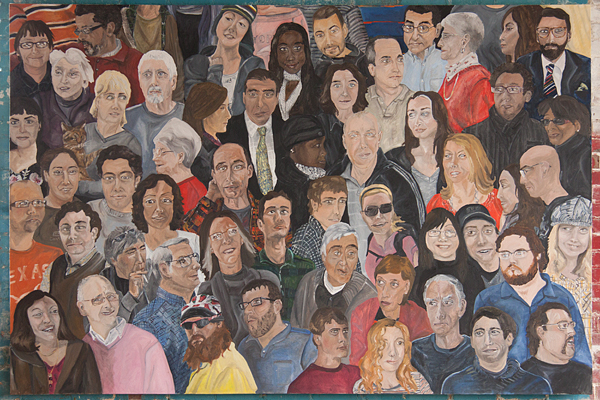
By Sandra Salmans
How a hundred-year-old idea is reshaping philanthropy around the world.
Carnegie and Rockefeller had recently established—and lavishly endowed—their eponymous foundations when Frederick Goff, president of the Cleveland Trust Company, had a different idea: a “community trust” to which the city’s philanthropists could all contribute. Interest on the money, it was declared, would fund “such charitable purposes as will best make for the mental, moral, and physical improvement of the inhabitants of Cleveland.”
 Frederick-Goff
Frederick-GoffThus, 100 years ago, was born the world’s first community foundation. (Bequests were, not coincidentally, deposited at the Cleveland Trust Company—setting a precedent for the charitable funds later established by financial services companies such as Fidelity, Schwab and Vanguard.) The Cleveland Foundation was soon leaving its mark on the city, supporting the creation of the so-called “emerald necklace” of the city’s parks, shaking up the corrupt judicial system, spearheading public school reforms that included equal education opportunities for girls. And within five years, community foundations (CFs) had sprung up in Chicago, Boston, Milwaukee, Minneapolis, and Buffalo, NY.
The growth of CFs since then has been immense, immeasurably greater than even the visionary Goff could have dreamed. Today there are an estimated 700 CFs in the US. According to CF Insights, a consultancy specializing in community foundations, assets at CFs in the U.S. totaled $66 billion in 2013, an increase of $8 billion over the previous year. The Silicon Valley Community Foundation (SVCF) led the way, at $4.7 billion, followed by the Tulsa Community Foundation, with $3.9 billion, and the New York Community Trust, with $2.4 billion. (SVCF’s assets, which ballooned with a $1 billion gift from Mark Zuckerberg in 2013, surged ahead again in 2014 with a $500 million stake in the camera maker GoPro from its founders.)
 Mark Zuckerberg
Mark ZuckerbergIn 2013, commemorating the 100 years since the first CF was established, the Charles Stewart Mott Foundation created a chair on community foundations at Indiana University’s Lilly Family School of Philanthropy. And this past October, to celebrate the centenary of the CF, the Council on Foundations gathered leading philanthropic organizations in Cleveland, where it all began.
What’s more, the rest of the world—including the developing world—is rapidly following America’s lead. According to the latest tally by WINGS (Worldwide Initiatives for Grantmaker Support), a global network of grantmaker support organizations, and the Community Fund Atlas, which is underwritten by the Cleveland Foundation, there are currently some 1,100 CFs outside the US, in more than 50 countries and on six continents. Having launched in the US and Canada in 1914, the CF crossed the Atlantic to Britain about 35 years ago, took root in Germany around the time of reunification, spread to Russia and the former Soviet states, and is currently establishing a foothold throughout the developing world. Between 2010 and 2014, eight new CFs were established in Asia-Pacific, four in sub-Saharan Africa, four in Latin America and two in the Middle East. As the Mott Foundation aptly declared in its 2012 annual report, CFs are “rooted locally, growing globally.”
Whether in the industrialized world or the emerging one, CFs are identical in one key respect: They are public charities that tap the wealth of their communities, with the goal of redistributing it locally. That mission has universal application, asserts Emmett Carson, who is the SVCF’s chief executive officer and is also the visiting holder of the new Mott chair on community foundations. “We should think of the community foundation concept like water,” he says. “The water is the same, but it takes on the shape of whatever community you pour it into.”
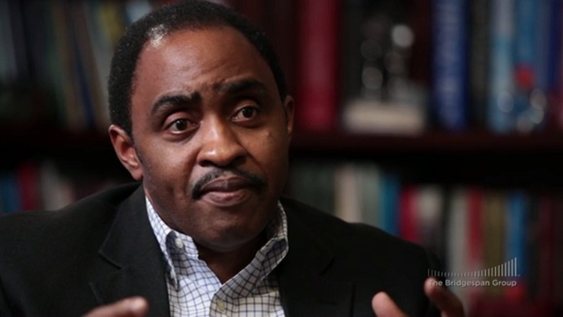 Emmett Carson
Emmett CarsonAnd the fact is that CFs differ markedly from one country to another—and, increasingly, even within a country. In the developed world, many CFs are taking on a more activist role than in the past, initiating projects and partnerships as well as donating to established programs. What’s more, many are traveling far beyond their borders, accepting funds from a wider audience and playing a role on the national and even international stage
Meanwhile, the CFs that are springing up in less developed areas—Africa, Asia, Latin America, Eastern Europe—are digging deep into their communities to convince residents to trust the very concept of pooling and distributing funds. While endowments and professional leadership are the hallmarks of long-standing CFs in the US, money necessarily takes a back seat to other priorities among CFs in emerging countries, where there are only small pockets of wealth. “They have to prove they’re relevant to the community and need to establish trust where often there are low levels of trust,” notes Nick Deychakiwsky, program officer for the Mott Foundation’s civil society team. In fact, in many cases those CFs have received a jumpstart by foundations such as Mott, Ford, Open Society and Aga Khan, and also appeal to the diaspora for funds.
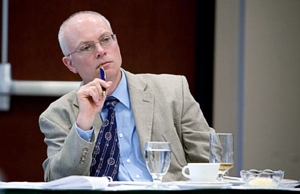 Nick Deychakiwsky
Nick DeychakiwskyAs Jenny Hodgson, director of the South Africa-based Global Fund for Community Foundations, observes, community philanthropy is as old as, well, communities themselves. “Every country and culture has its traditions of giving and mutual support between family, friends and neighbors,” she has written, pointing to the tradition of burial societies across Africa and hometown associations in Mexico.
However, the new generation of community philanthropy institutions—fueled by factors ranging from a growing concentration of wealth to the popularity of social media, according to WINGS executive director Helena Monteiro—take a more strategic approach to giving. “Most are about development rather than donor services, and they do a lot of capacity building,” Hodgson told Giving. “They’re building civil society, essentially.” As the Kenya Community Development Foundation, a CF established in 1997, asserts on its website, its goal is “the growth and sustainability of communities by their strong engagement in owning and driving their development efforts.” (Italics are KCDF’s.)
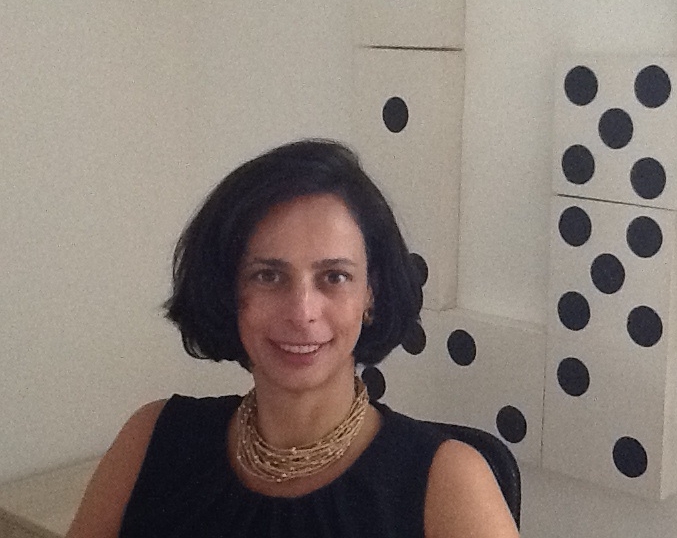 Helena Monteiro
Helena MonteiroA sampling of this new breed of CFs offers a glimpse of the variety of programs being undertaken:
- In Egypt, the Community Foundation for South Sinai is working to support the Bedouin, who have long been marginalized. The CF is working on several fronts to raise the tribes out of poverty and preserve their heritage; projects have included teaching the women how to make useful wool products, and providing a camel to a boy who was his family’s breadwinner.
- In Costa Rica, the Monteverde Community Fund, initially founded to invest tourism revenue in preserving the rain forests, has added a social portfolio. Among other projects, it is promoting a community Internet-based radio station, training local youth to create programming and encouraging them to engage in public discourse.
- In Romania, multiple CFs have organized annual “swimathons” to raise their profiles, garner funds and spread the ethos of sharing. In Cluj, the country’s second most populous city, revenue went to support new programs for young people, including a robotics class in an elementary school and education for students with special needs.
- On the West Bank, the Dalia Association, a Palestinian CF, gave women from nearby villages $6,000 to build a park. The women went on to secure additional donations, including the land, utility hookups, a basketball court, a playground and a library.
- In Slovakia, the Banska Bystrica City Foundation—Eastern Europe’s oldest CF, initially launched as a World Health Organization project—has assembled a group of local donors that assist the city’s street children, provide support for the local Roma community, and encourage younger people to take an interest in philanthropy.
While all these CFs have struggled to raise money, elsewhere they have also encountered tight governmental controls or opposition. Even there, however, they are making headway. According to a recent report by CAF (Charities Aid Foundation) Russia, a support group for charitable and nonprofit groups, nearly two-thirds of the membership of CF governing boards comes from the authorities and business; even so, starting with one CF in 1998, Russia today has more than 45 community foundations. The situation is more problematic in China, where very few private organizations are permitted to do fundraising, grantmaking is relatively unknown and civil society is weak. Still, says Hodgson, “everybody is talking about community foundations in China. There’s lots of energy right now.”
That’s also an apt description of the situation in the US, where the biggest CFs are stepping up their game. Rather than limiting themselves to making grants to established programs, “community foundations are increasingly moving into the sphere of brokers for community solutions,” declares Clotilde Perez-Bode Dedecker, who heads the Community Foundation for Greater Buffalo in New York State. Dedecker’s group was the prime mover in launching Say Yes to Education, an initiative that has brought together school parents, union leaders, the business sector and other stakeholders to provide year-round support to students K-12, including college scholarships.
 Clotilde Perez-Bode Dedecker
Clotilde Perez-Bode DedeckerArguably the most striking example of the supercharged CF is the Silicon Valley Community Foundation. The result of a merger of two leading CFs in 2006, SVCF is not only the largest single grantmaker to Bay Area nonprofits, it’s the fifteenth largest international grantmaker in the United States, according to Carson. Furthermore, while SVCF draws much of its wealth from the affluent high-tech community, it also has donors who neither live in the Bay Area nor give to it, but choose to use SVCF as the means to distribute their philanthropy.
To Carson and others, these developments represent a natural progression for CFs in a society that is ever more global. “People increasingly see themselves as national citizens and, more likely, as global citizens,” he notes.” And because many Americans, or at least their parents, hail from different countries, they want to be able to send money overseas as well as to contribute to their new homelands. To compete in this arena—and also to counter the inroads made by financial services companies such as Vanguard and Fidelity, which are vying for donor-advised funds—the leading community foundations are carving out a niche in international philanthropy.
To some people in the CF world, venturing so far afield seems incompatible with the very notion of a community foundation. “A part of me says, ‘Shouldn’t it all be local?’” says the Mott’s Nick Deychakiwsky. But as someone with his own strong spiritual ties to Ukraine, Deychakiwsky concedes that “we’re all living in a more globalized world.” Ultimately, he hopes, globalization will lead to US-based CFs becoming more involved with community foundations abroad—relationships that could benefit organizations in both the developed and developing world. (And there are surprising similarities: Experts notes that CFs in emerging countries have a lot in common with those in rural areas of the US such as the deep South, where “hyperlocal” community development remains the sole focus.) “It’s amazing how much is transferable,” agrees Dedecker of the Community Foundation of Greater Buffalo, who is exploring the sharing of best practices with a CF in Nottingham, England. “The universal drive is for significant change and a strong sense of place,” she concludes. “That’s what unites us all.”
Good Done Great & The Rise Of B Corporations
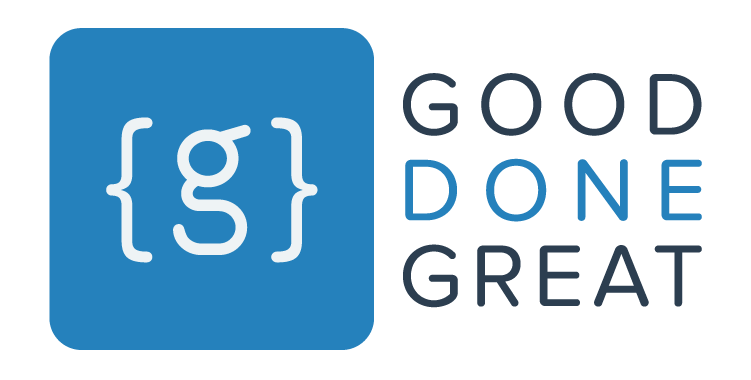
By Earl Bridges
Technology, Data-based Storytelling, and CSR
By the time I co-founded Good Done Great, I had already seen my share of poverty. I’d spent my formative years in Thailand with a father who was an Air Force pilot-turned missionary and a mother who was an early social good entrepreneur. As my father tended to the spiritual needs of the congregation, my mother spent her time providing job skills and entrepreneurial mentoring to a thriving cottage industry. I witnessed first hand how this type of support complemented and often exceeded the impact that the church could achieve through utilizing contributions from their members. What started out as her little business soon prospered, and the money often-times became the main source of income for our family. It was then that I realized how critical business engagement was to solving many of the world’s greatest social and environmental challenges.
I returned to the United States after high school, attended college, and then later completed a masters degree in international business studies. I held the expected jobs in the corporate world with expanding responsibility and challenges and yet found myself increasingly anxious to do something with greater social impact.
In 2009, I contacted a former colleague, David Barach, and together we imagined a technology firm which might increase efficiencies for foundations and other philanthropists to identify needs, select charities, and provide grants directly to the most deserving programs. The solution quickly gathered momentum with foundations. As the solution spread, we discovered there were many multinational corporations with a growing desire to be involved in the communities where they participated. We were anxious to partner with firms that were willing to lend their resources for good.
 Earl Bridges
Earl BridgesCorporations command a unique position within the world of giving because they have both the financial means to donate to nonprofits, AND employees with both time and money to volunteer. The workplace is where human and corporate capital intersect.
We continue to believe the corporate social responsibility market is ripe for disruption. With a U.S. donation market of $280 billion from individuals alone, we see an opportunity for our company to do well by doing good. During the last several years, we have dedicated our efforts to proving solutions for workplace giving. Corporations with a purpose that create a culture of people who really care, and are encouraged by their employer to seek out charitable causes that have the greatest capacity to change the world.
The Good Done Great solutions provide employees with a web portal to find volunteer opportunities, make donations and receive their company’s match, and engage with others. They can follow their progress towards personal giving goals, team goals, or company goals. Gamification strategies encourage additional good works in order to reach higher levels.
We’re also able to integrate our corporate grant solutions with workplace giving which enables corporations to aggregate information from all of their CSR programs in a way that has never been possible on one platform. This is significant because often with corporations, volunteerism lives in human resources as an employee engagement strategy, corporate giving lives in the CEO budget, corporate sponsorships live in marketing, and matching gifts are often a hybrid that lives in community or investor relations. We believe that too few companies are combining all of the results of these initiatives into a story that tells the “purpose” of their company. Good Done Great’s unifying technology creates a crucial platform where data from volunteerism, grant making, sponsorships, matching grants, and employee donations all lives in the same place and is easily accessible, enabling integrated data-driven storytelling. It’s rewarding to know that our products and services are ultimately building the reputations of corporations that we’re very proud to partner with.
One final note, It was important to David and me to remain true to our original social intentions despite the growth of our company. So in 2012 we became a B-Corp, or benefit corporation. We believed that as a for-profit business we have the same responsibility to bettering our society that our philanthropic clients have. The B Corporation movement reflects our values, which is why we joined this community of companies that is creating a society where businesses are beacons of what good citizenship can be.
The journey to building a socially-responsible, yet profitable company has been extremely rewarding. We have found many partners along the way who have shared in our vision of a better world through active leadership by brands, companies, and philanthropists. We are constantly inspired by our clients and their employees, and the innovative ways they come up with to impact the needs in their immediate surroundings. And we have made a difference in the world.



